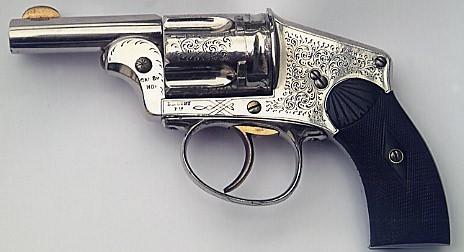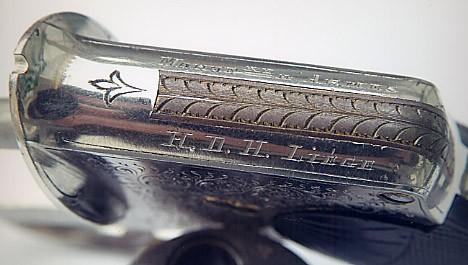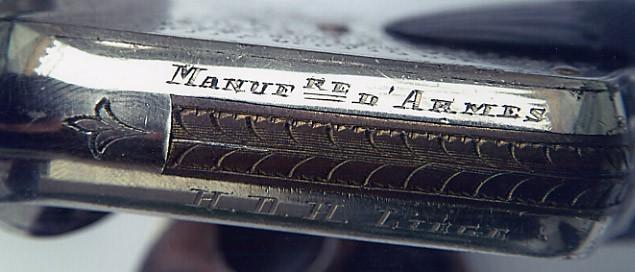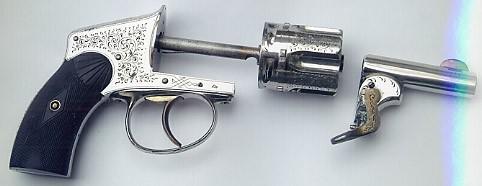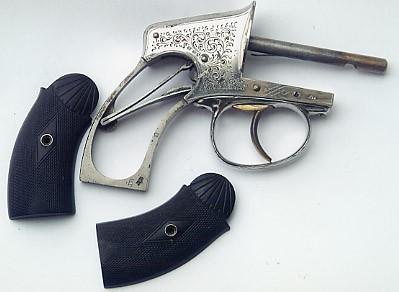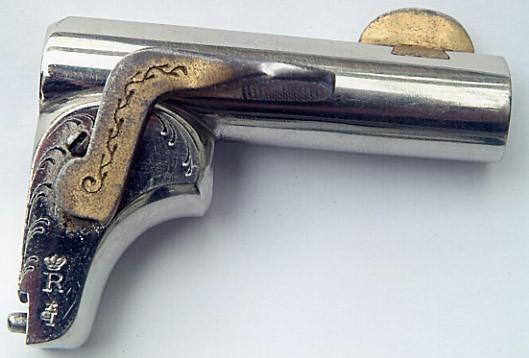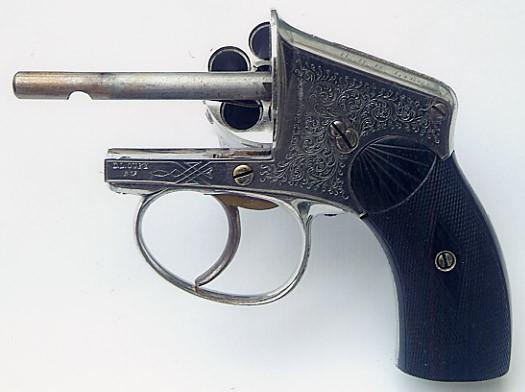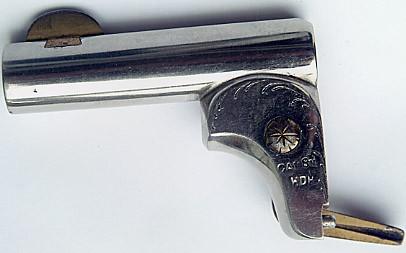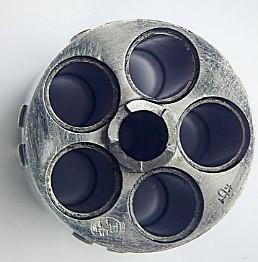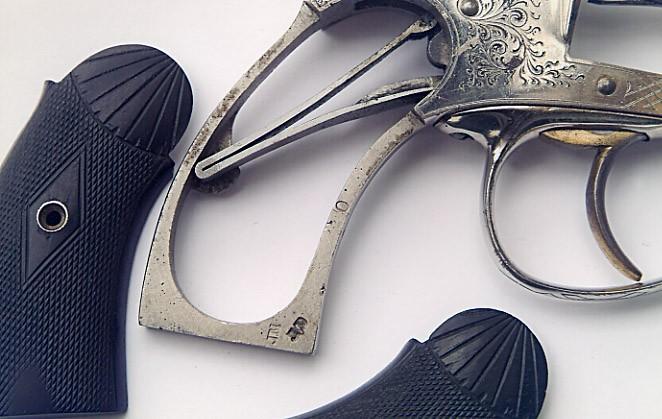Some of the most beautiful work of this craftsman, and many others, are in this book “Liège Gunmakers through their Work. 1800 - 1950”.
For more detail see: LIEGE GUNMAKERS
Henrion, Dassy & Heuschen (HDH)
Here is a very classic small puppy revolver with
folding trigger and safety type Mauser on the left in caliber 320 from the house
Henrion,
Dassy and Heuschen, a limited partnership,
rue Chéri 22 in Liège, registered at the proofhouse from 1910 to 1921. It is
extensively mentioned on the site and in the exceptional collection.
Markings
ELG on
star in crowned oval: accepted, in use from 1893 to 1968;
R
crowned: striped cannon, in use from 1894 to 1968;
K under
asterisk: countermark of a controller in use from 11877 to 1968;
C
crowned: unidentified; perhaps a German stamp?
GP with the help of HPH
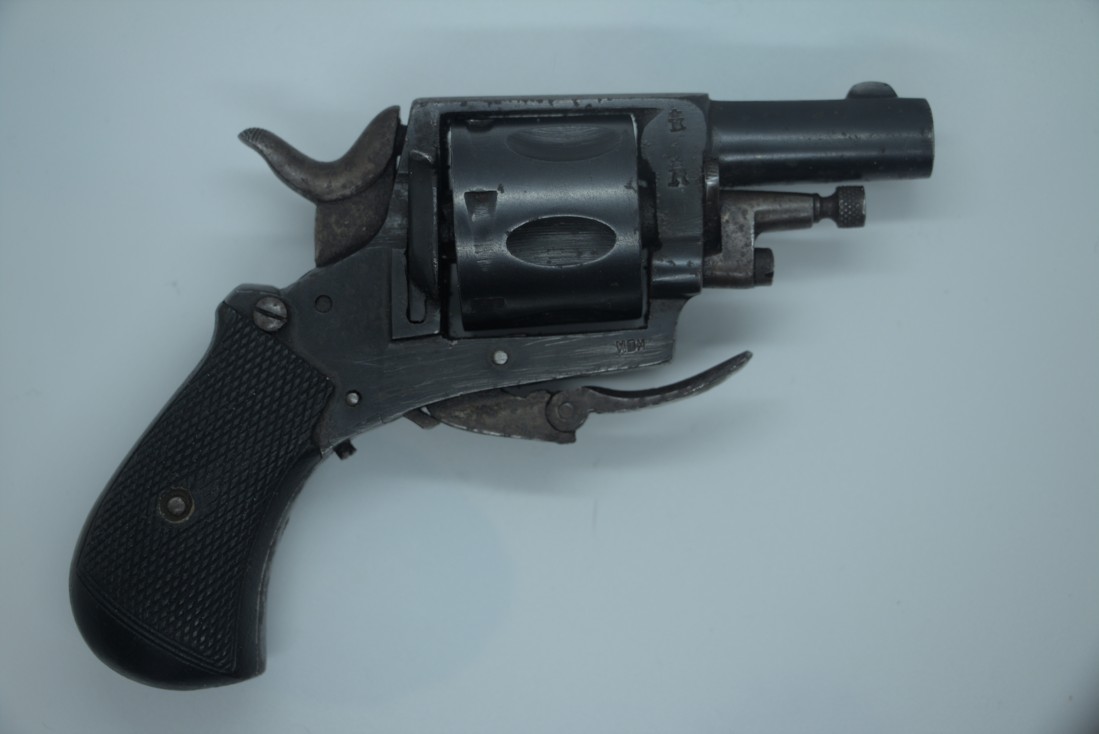
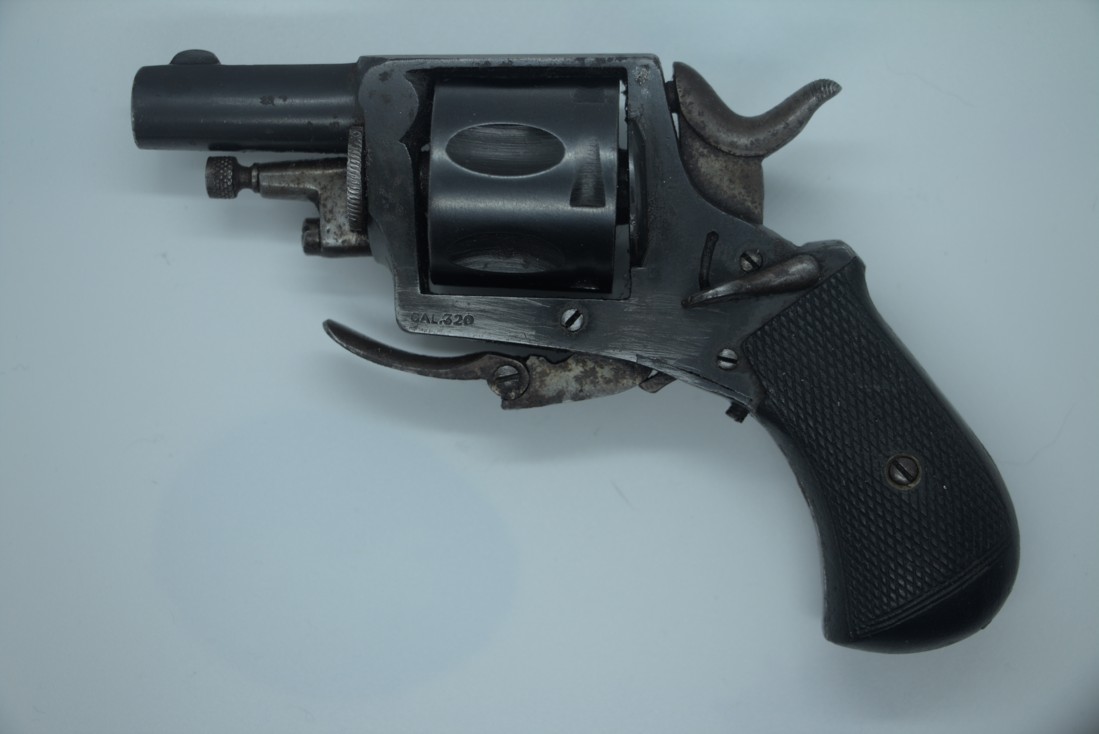
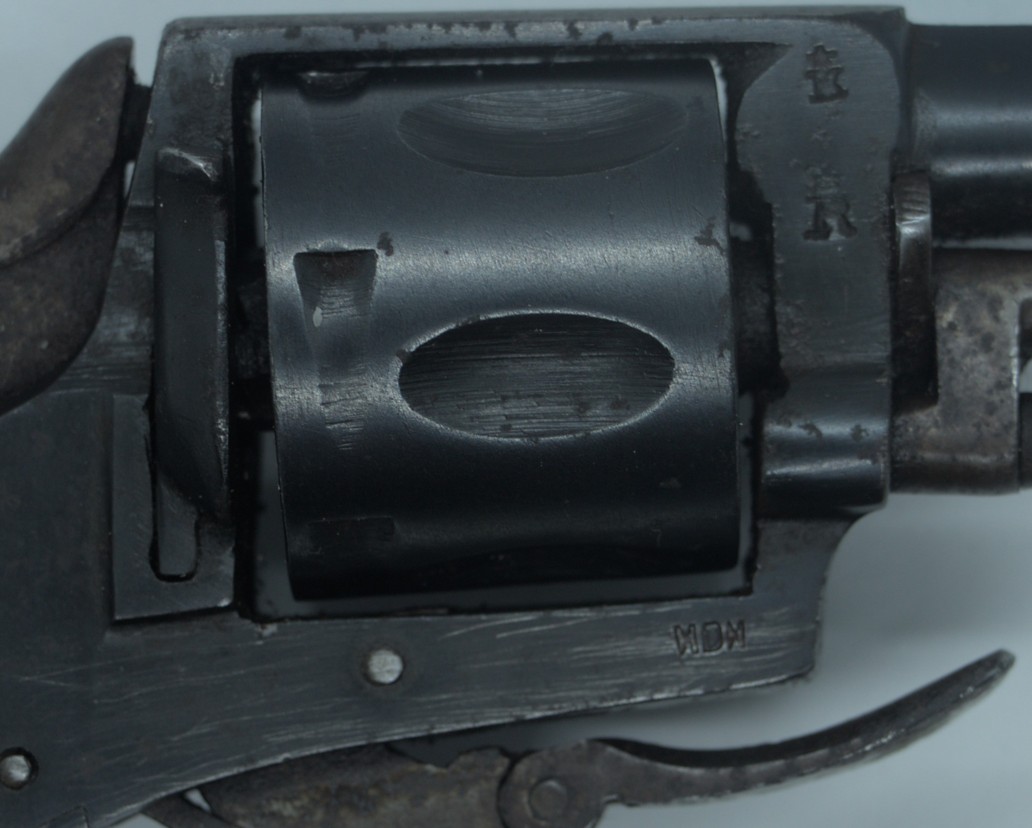
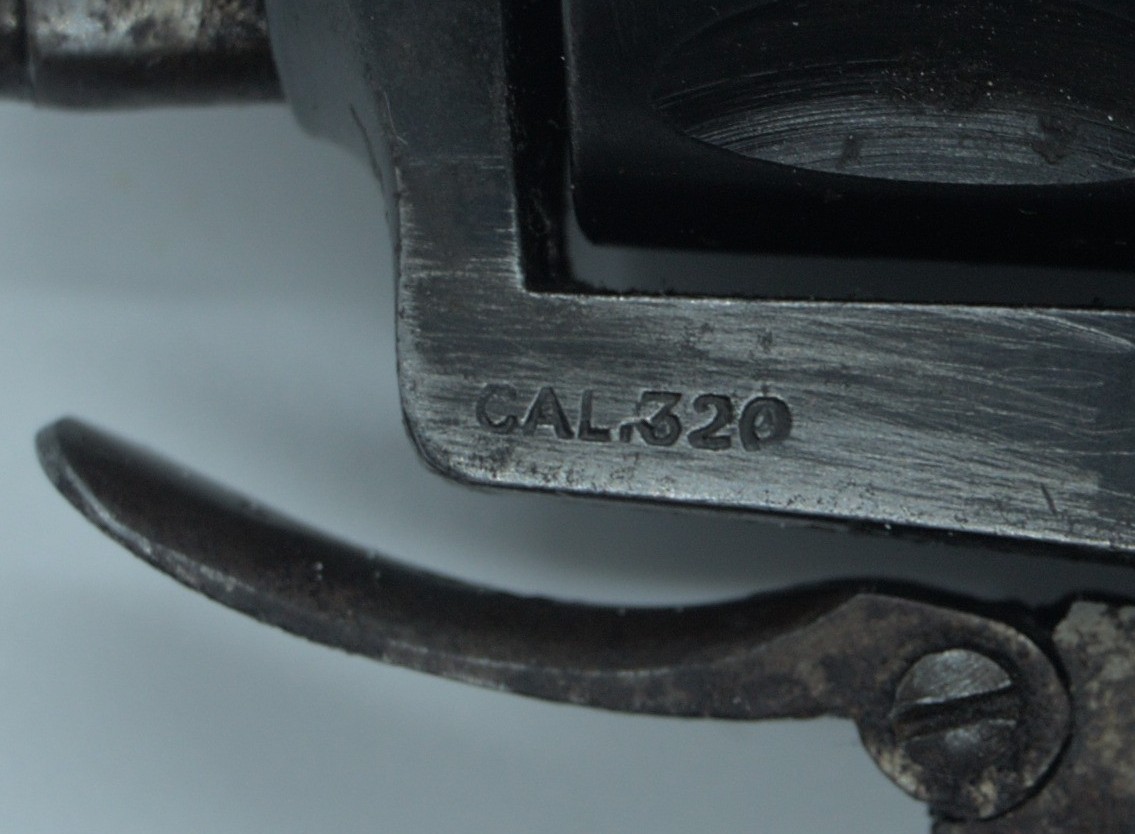
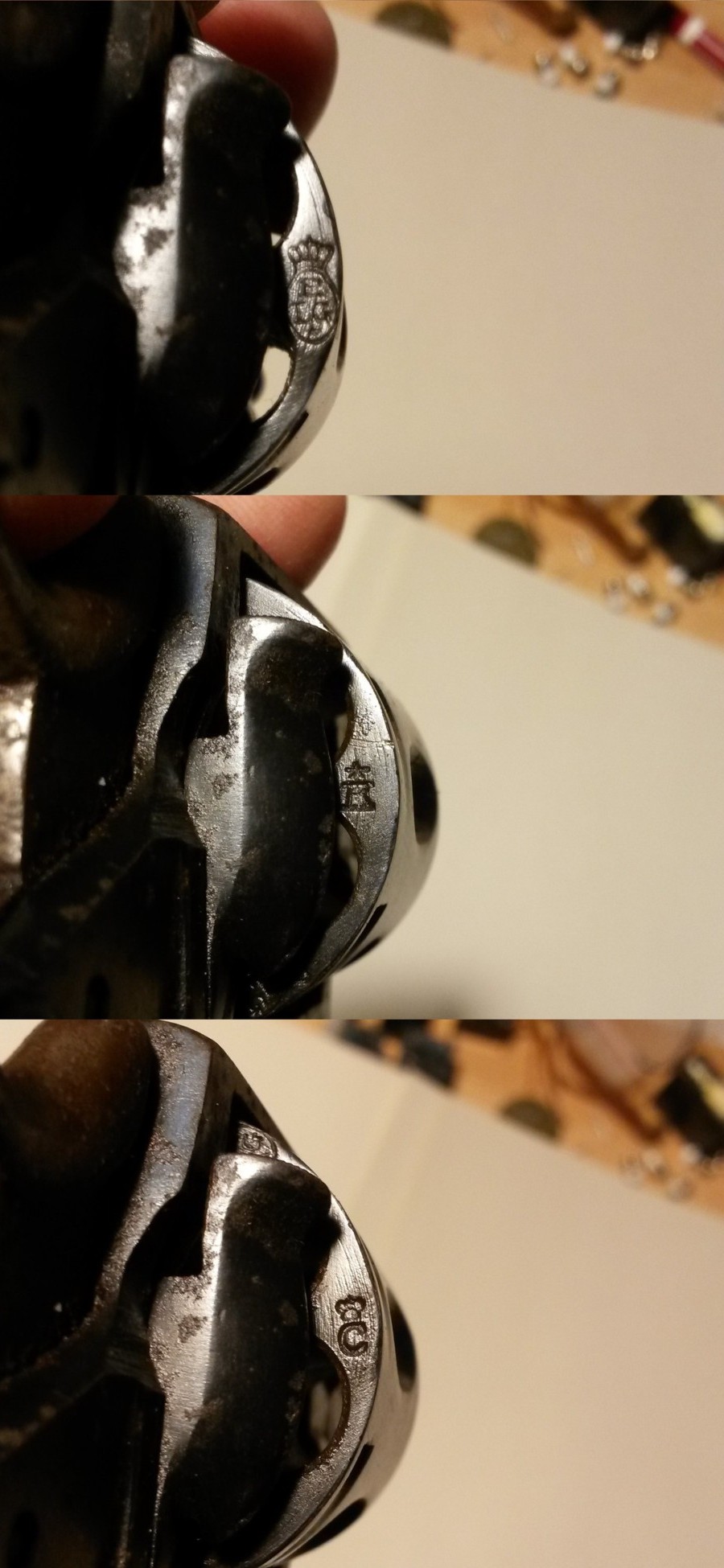
Henrion, Dassy & Heuschen (HDH)
This revolver made by HDH have the Mauser safety. Notice the hole in the left side of the frame.
The cylinder turns to the right. You can see if the revolver is lined up if the chamber is loaded.
Quit a useless devise. Becouse if there is a empty case in the cylinder you can not see if it is a life one.
The revolver is of a very good quality.
Henk
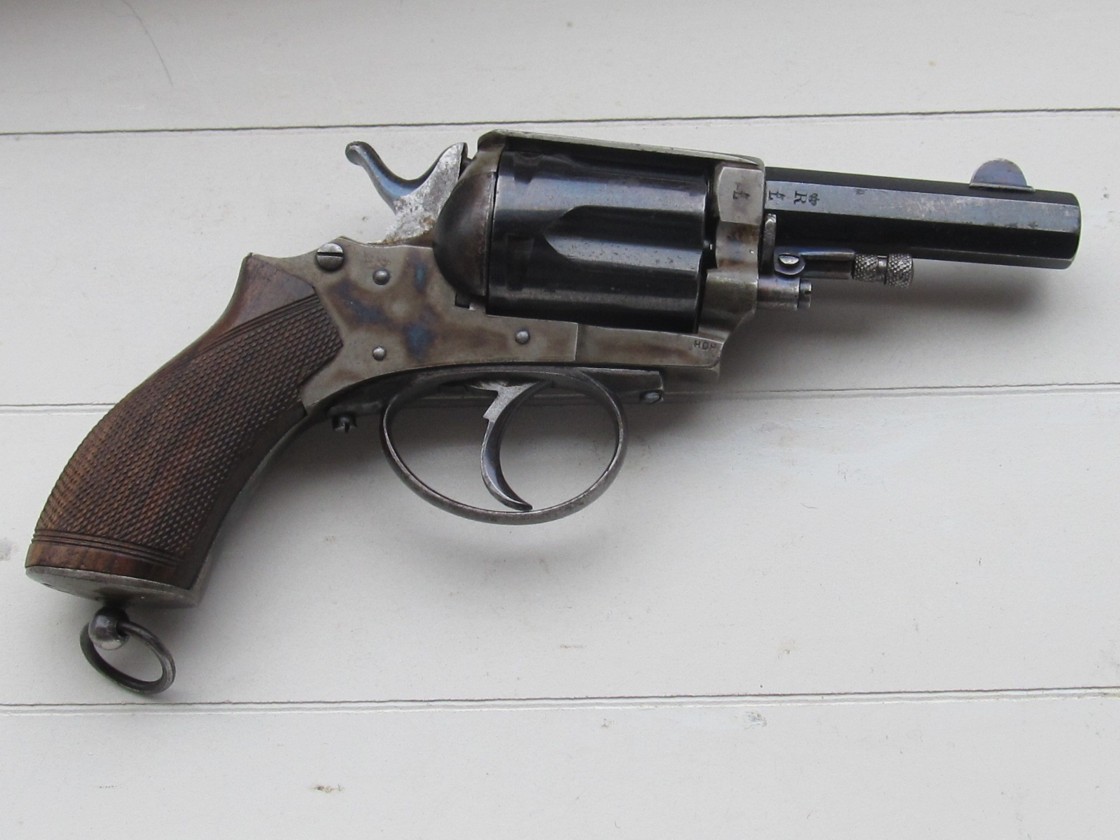
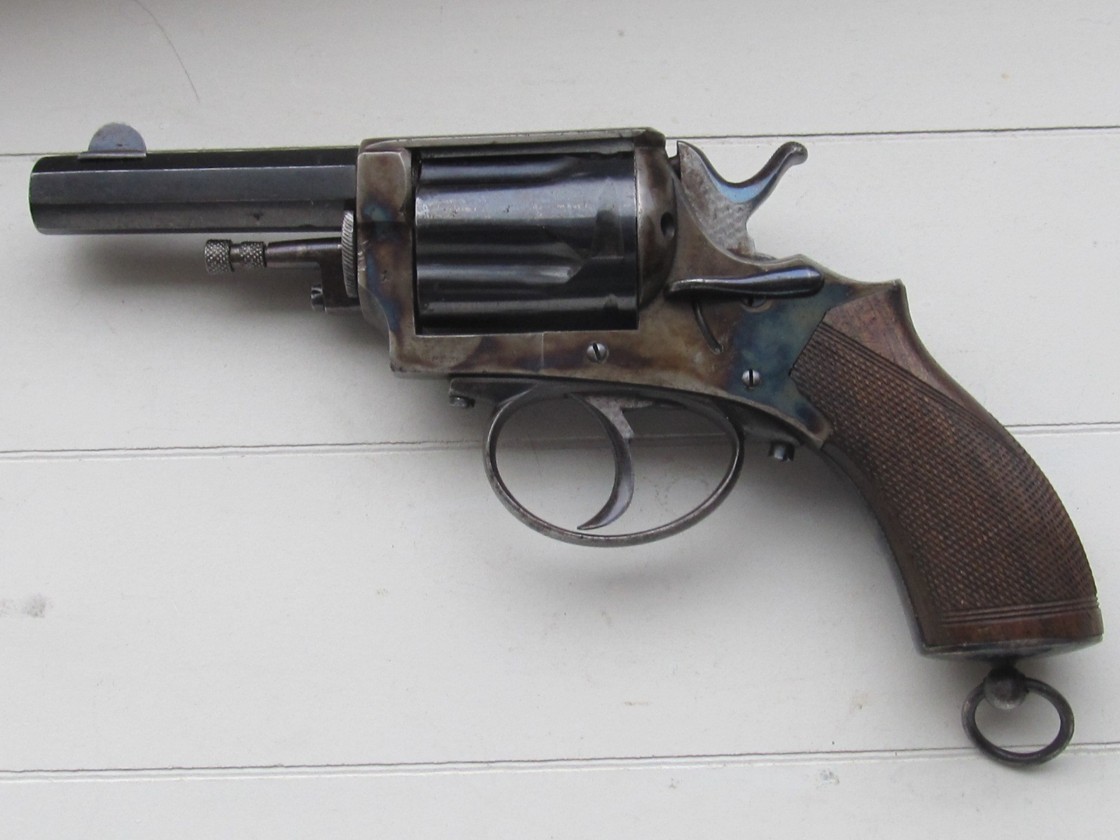
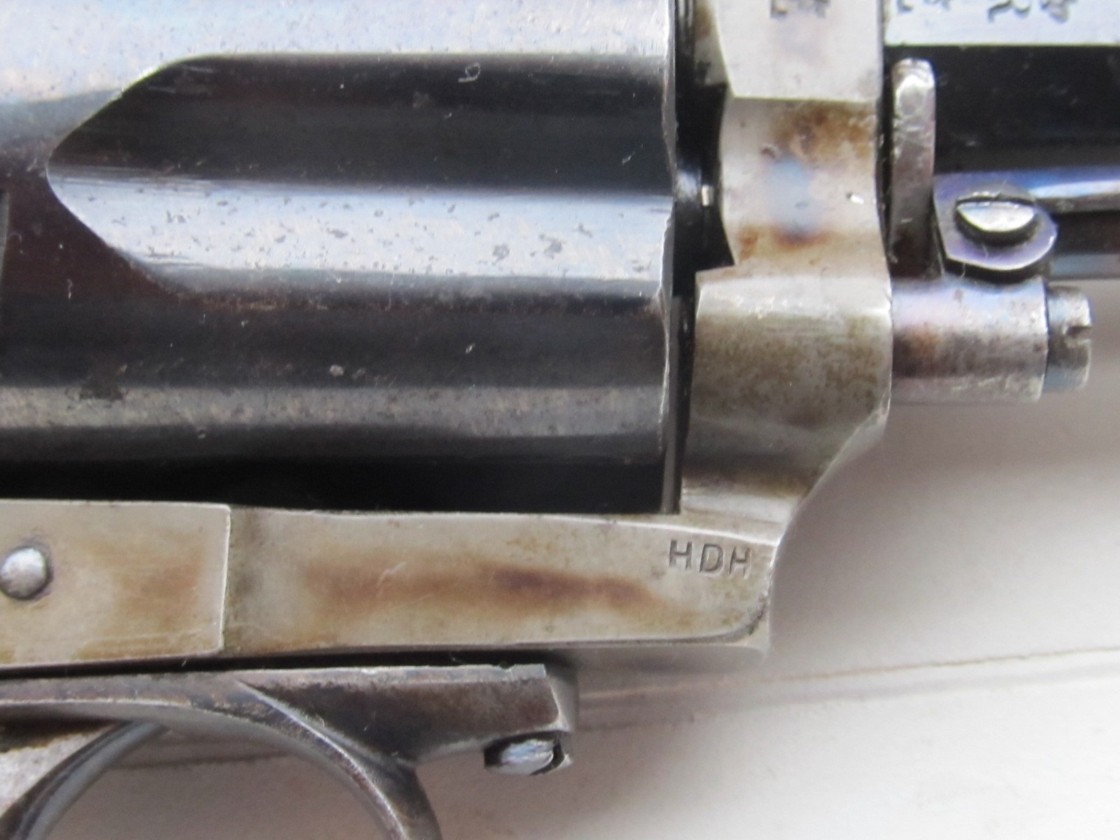
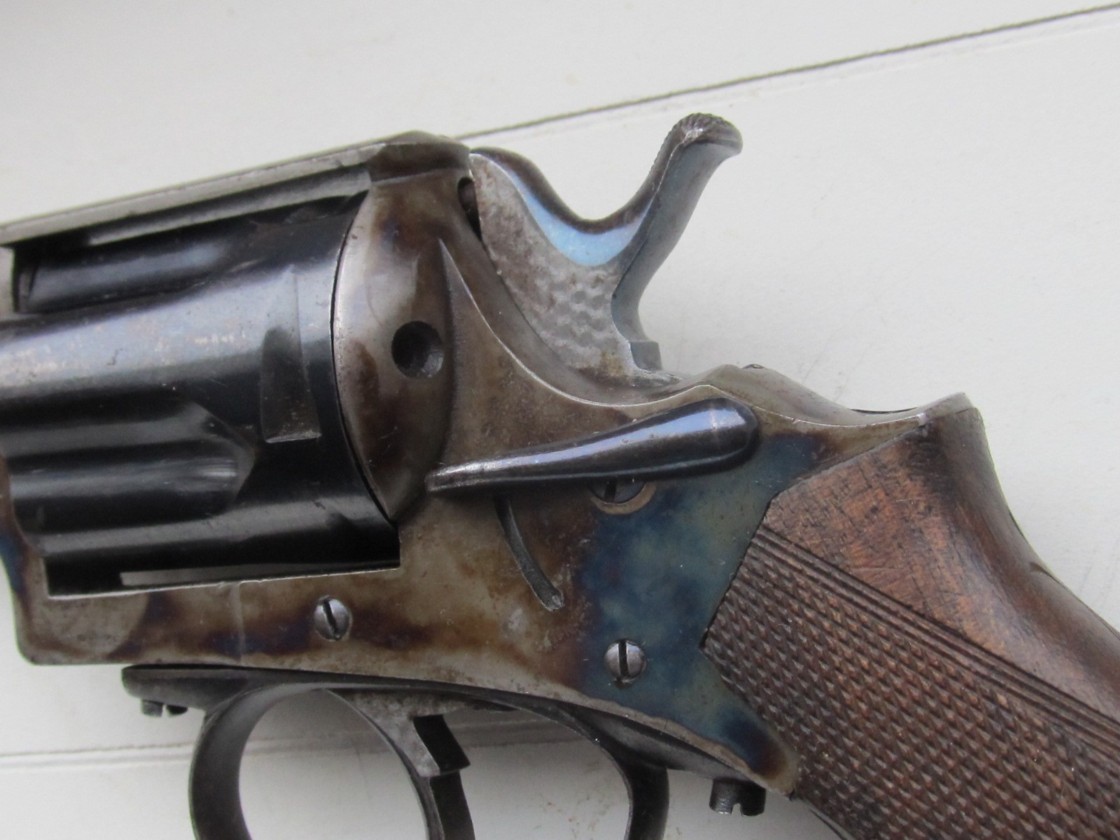
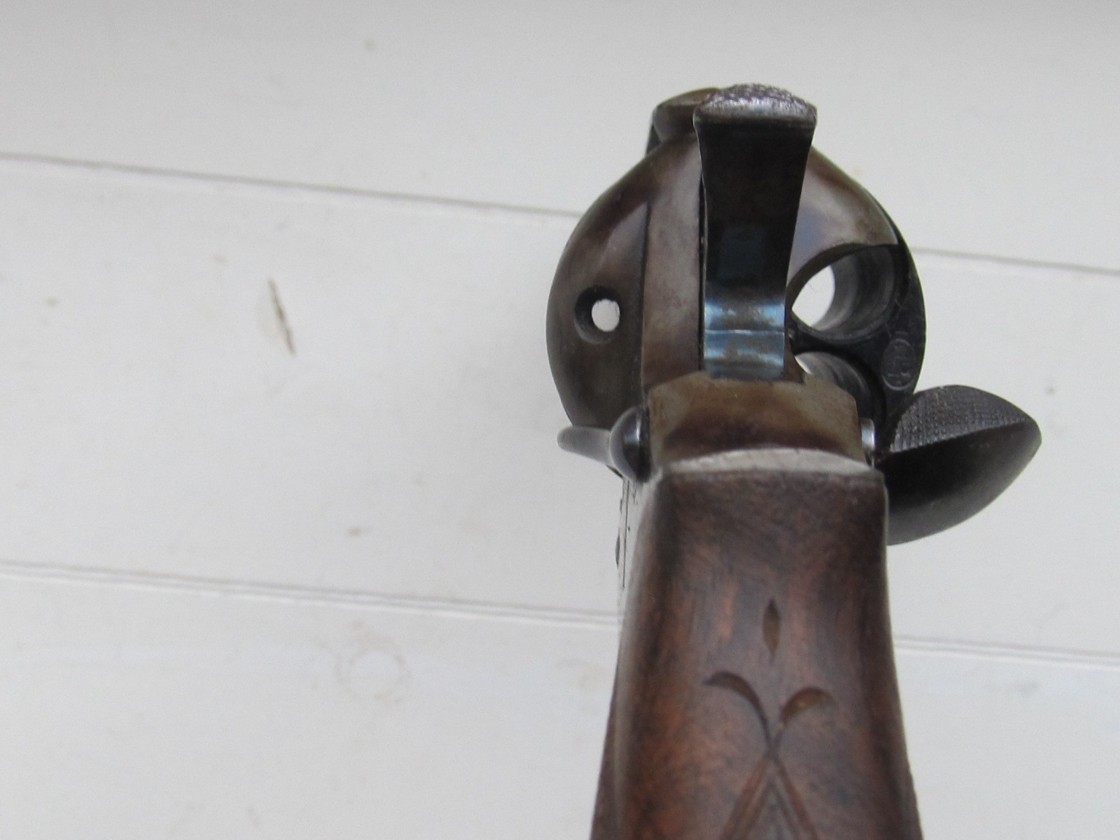
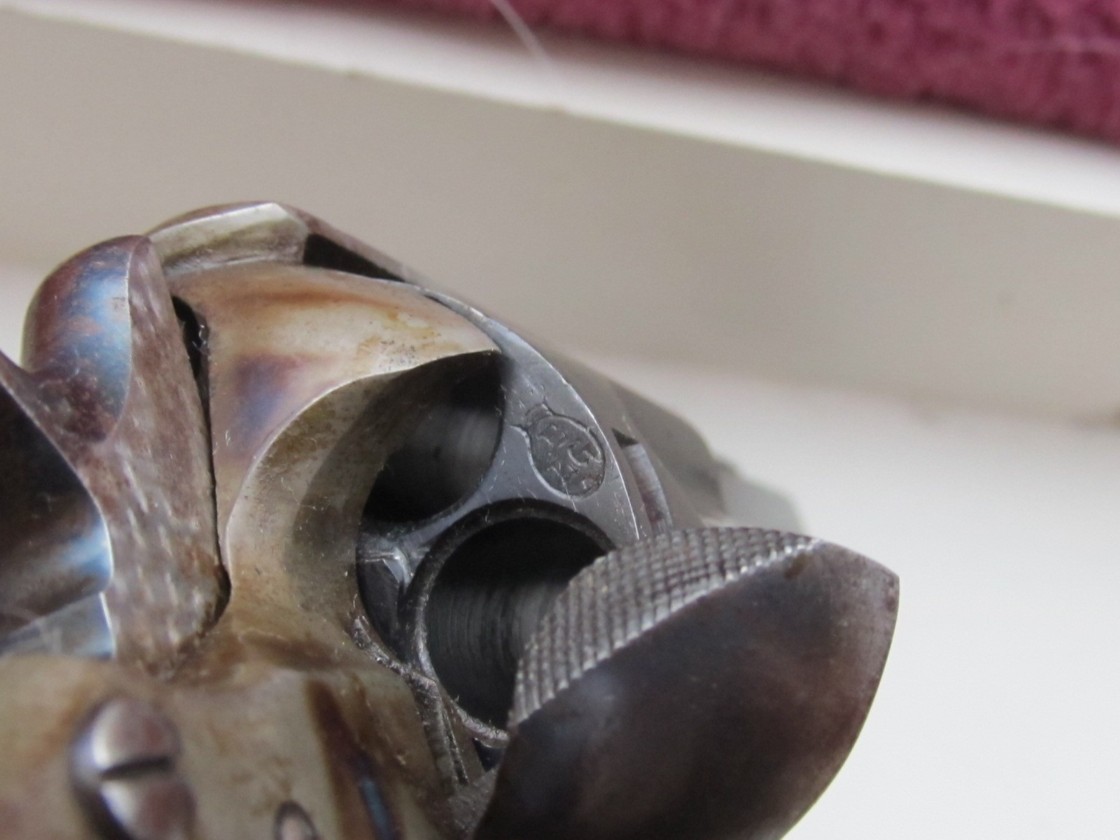
Henrion, Dassy & Heuschen (HDH)
The
so-called “salon” pistol probably manufactured by the firm HDH (Henrion Dassy
Heuschen).
Caliber
9mm flobert smooth barrel.
Mexican
trigger, serpentine key opening system.
Markings:
ELG
starred in a crowned oval, Peron and countermarks C starred controllers post
1877.
The
plates of grips bear markings that resemble Roman numerals (VIII) and are
“equipers” markings.
There is
also a Meyers-Coune mark on the metallic structure under the plates, which is
rather odd since the gun is supposed to have been made by HDH!
This type
of weapon is quite common even if it is most often found in 6mm flobert caliber.
Alain
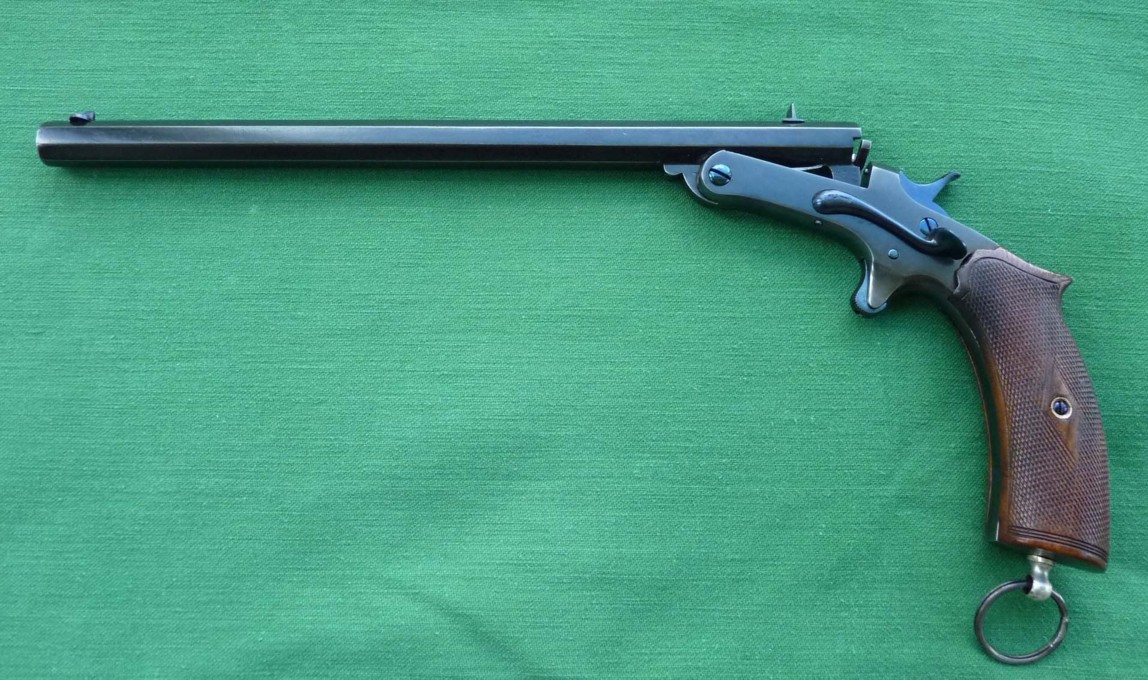
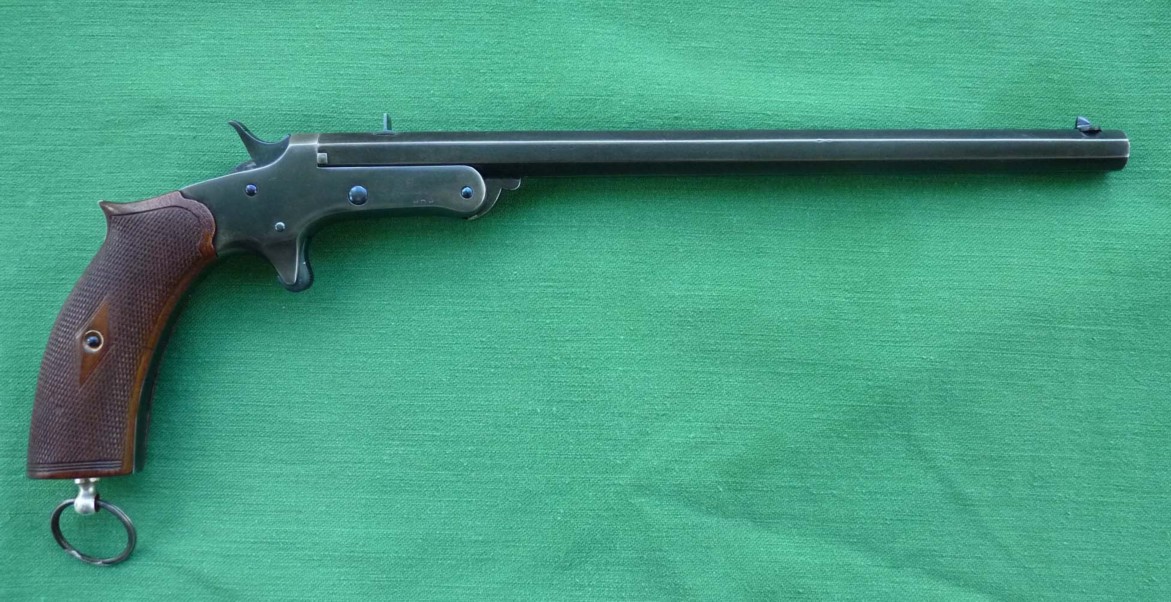
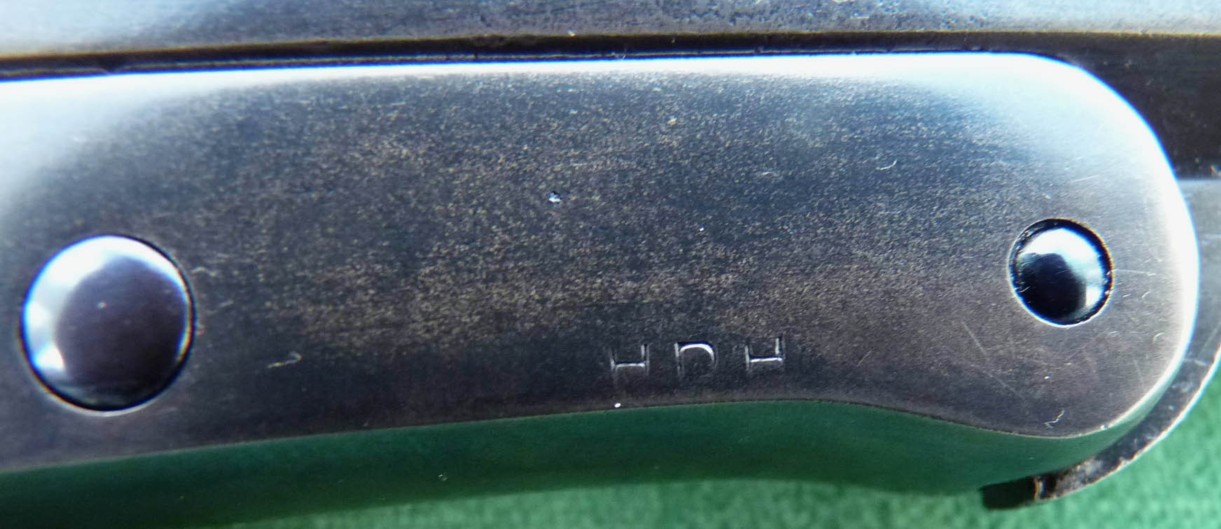
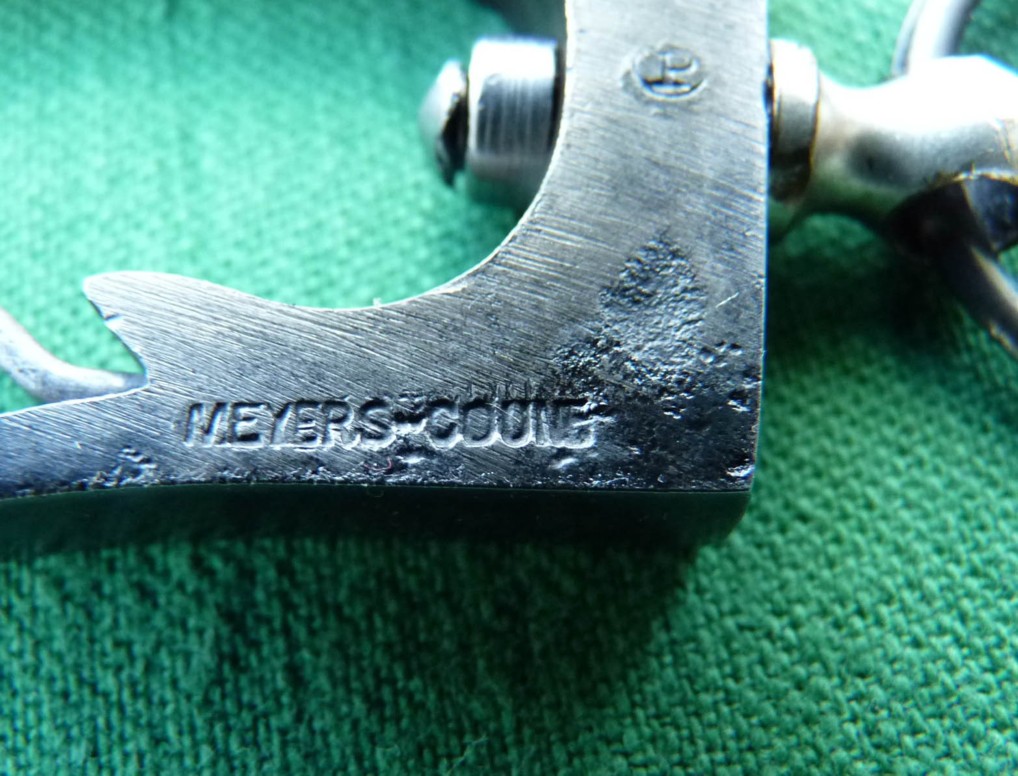
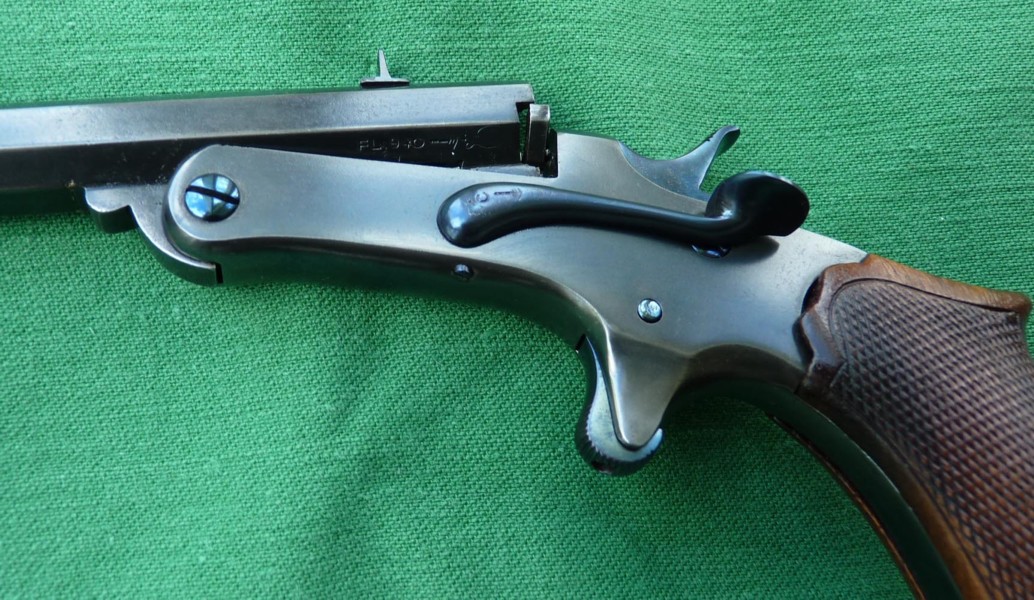
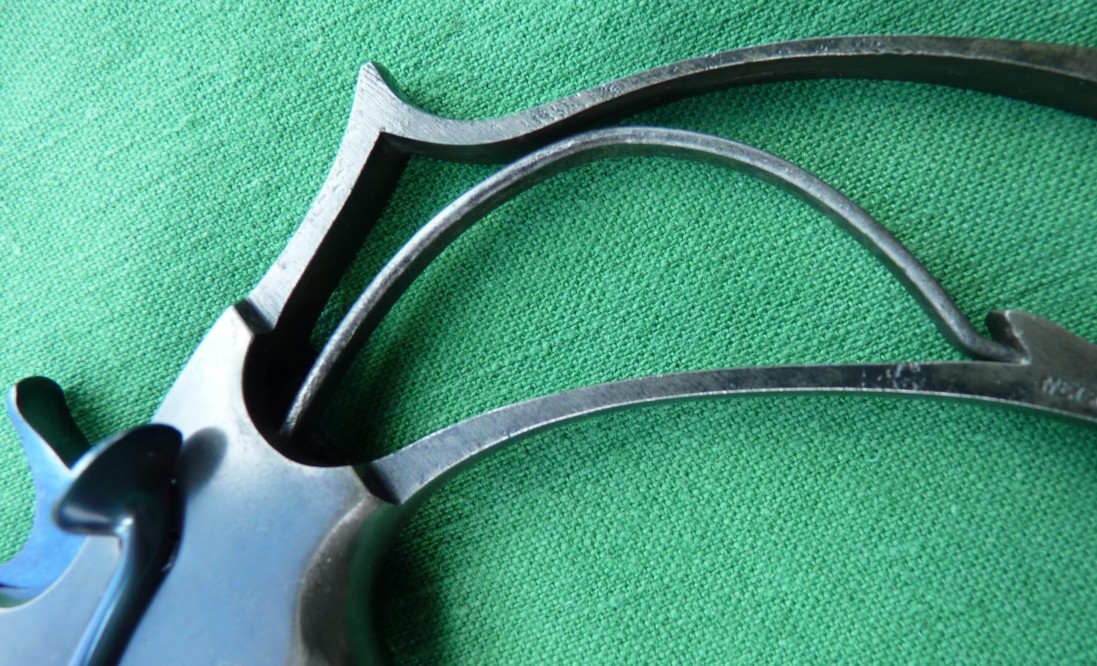
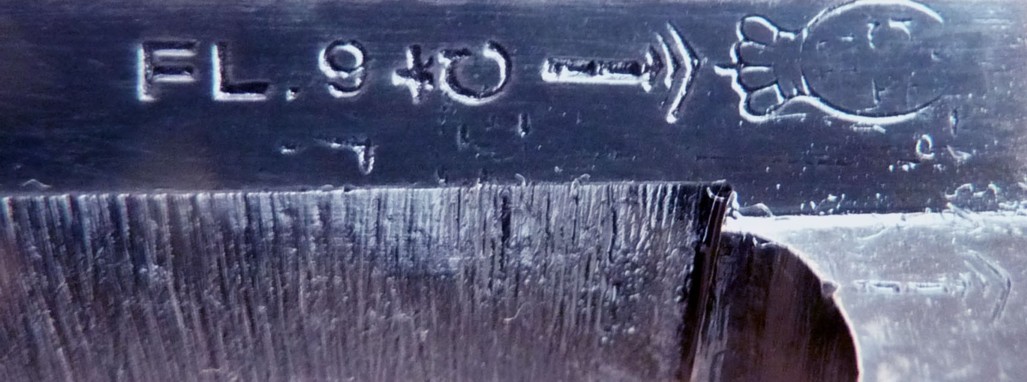
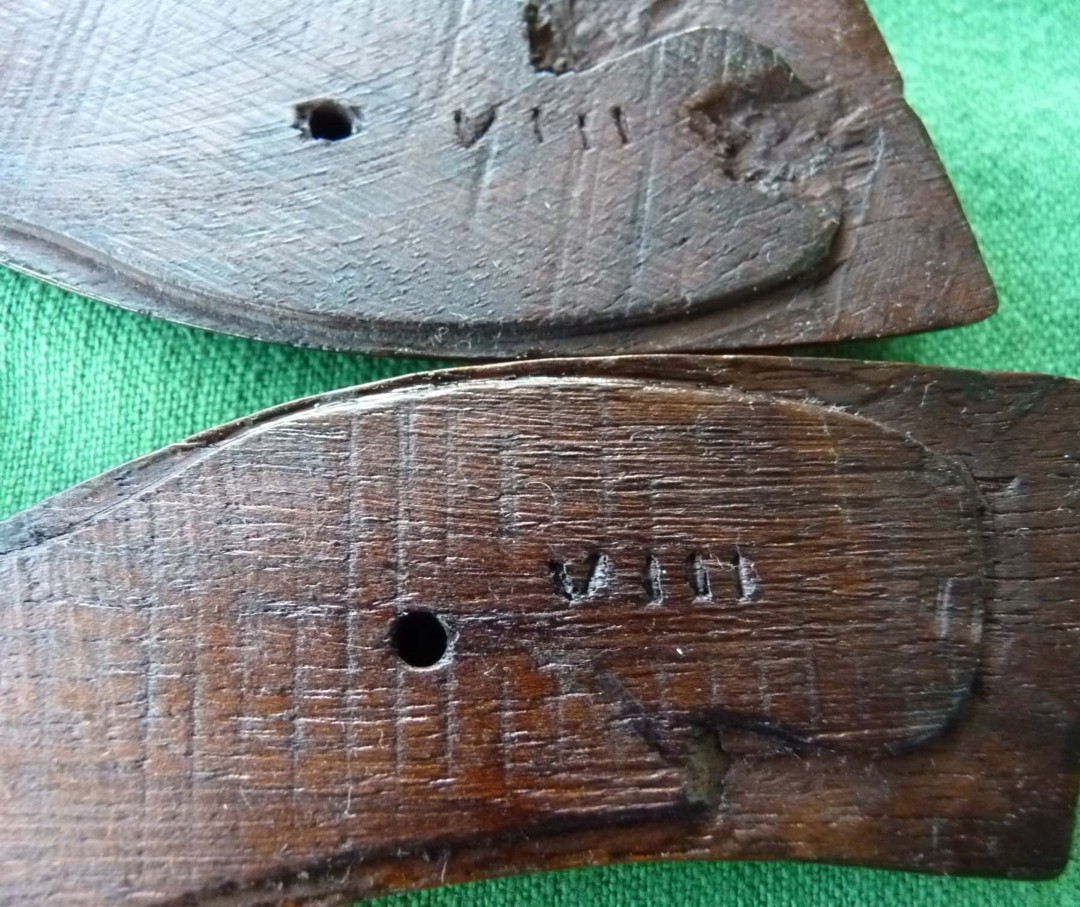
H.D.H.
In my opinion, it’s about (few photos? ) a revolver with the ejection of the
cases through the perforator’s orifice into the enlarged frame. The hammer with
the truncated extremity comes backwards thanks to the pressure of the gas
generated by the shot. The hammer continues its run and comes crashing against
the stop intended for this purpose and then returns to its first position. The
barrel is fluted while the central percussion barrel is round and striped with
triangular front sight. The trigger is curved under oval bridge. The door for
extraction and/or ejection casings are placed to the right of the gun, at the
back of the barrel. Doesn’t the stick have any platelets on that gun?
It bears the statutory hallmarks of the Liège proofhouse, namely:
R crowned: stripped barrel, in use from 30.
01. 1894 to 26. 02. 1968.
PV surmounted by a stylized lion: smokeless powder test, in use from 04.
10. 1898 to 26. 02. 1968.
The crowned ELG* punch is not visible on the photos. It is the definitive
acceptance in use from 11. 07. 1893 to 26. 02. 1968.
The 22C mark should represent the calibre of the gun.
Henrion, Dassy & Heuschen (HDH)
was a general partnership, rue Chéri, 22 in Liège (proofhouse 1910/1921) then
continued manufacturing under various names until 1934 (see The Who is Who of
the Liège Armoury).
GG
H.D.H.
Here is a hunting rifle juxtaposed with outdoor dogs and platins, a product of the Liège house HDH for Henrion-Dassy-Heuschen, active between 1910 and 1934 under various social reasons. His production was very abundant and diversified, as can be seen on this page.
Markings
Lion on
PV: smokeless gunpowder proof, in use from 1898 to 1968;
p under
star: countermark of a controller, in use between 1877 and 1968;
M (?)
under star: undoubtedly a countermark of a controller, same period as above;
Peron:
inspection, of use since 1853;
16 C in
vertical rhombus: gauge, of use between 1898 and 1924;
ELG on
star in crowned oval: acceptance, of use between 1893 and 1968
P 1
k160. 9: weight of the barrel being able to draw from the powders without smoke,
of use between 1892 and 1924;
EL:
provisional test, of use since 1852
Choke 16. 4 out of 16. 8 and 16. 6 out of 16. 8: choked guns "reversed", of use between 1910 and 1924; contrary to the "normal" chokes, those which one calls "reversed" ensure a very fast dispersal of the seals, like for a blunderbuss.
This is
probably also why the guns are quite short, at least it seems to me.
D 70 m over 18. 9: chamber length in mm and diameter in mm after the optional test, in use between 1892 and 1924;
The
annual letter species on the cannon table should be a cursive “b”, so for 1923.
Two
crossed axes on a dice: a trademark of HDH registered on August 21, 1919.
The
trademark appears to be “simplified” compared to what can be seen in the
specialized literature, but according to the experts who have good eyes, it
seems to be in conformity.
L J in
truncated cartridge on the right: unidentified; probably a subcontractor;
GP with the help of HPH and PHL
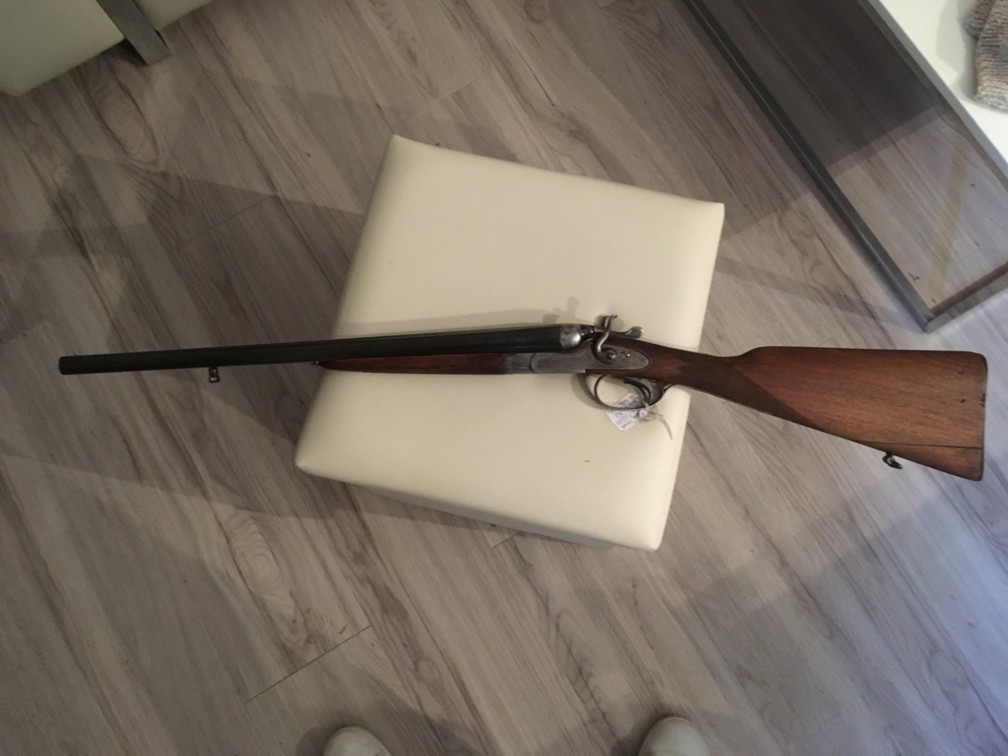
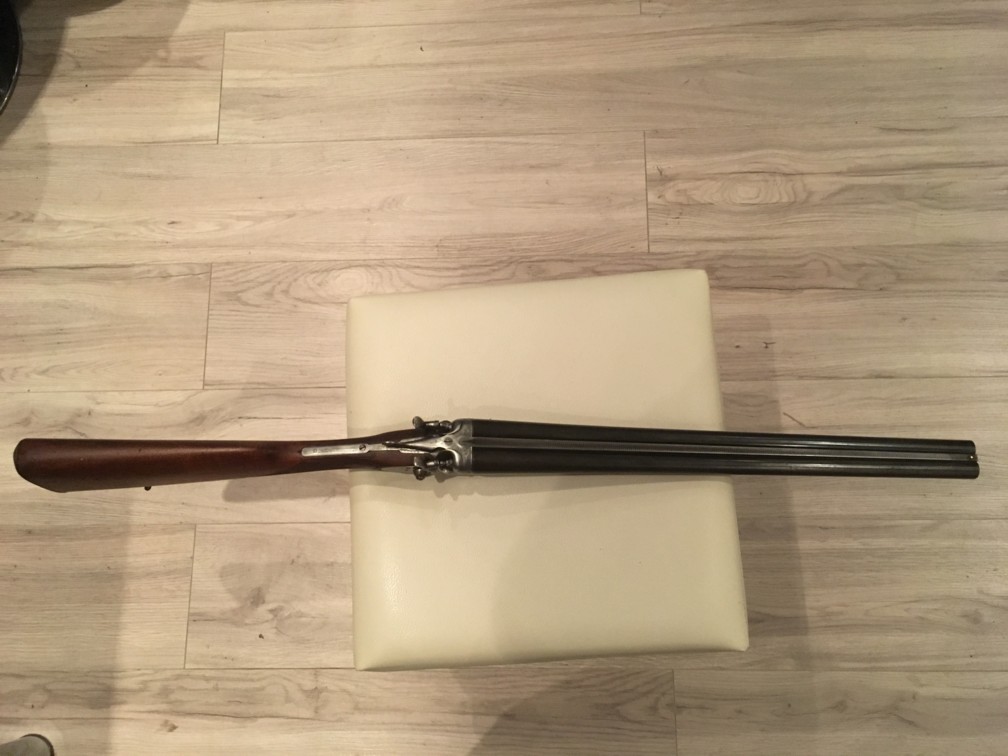
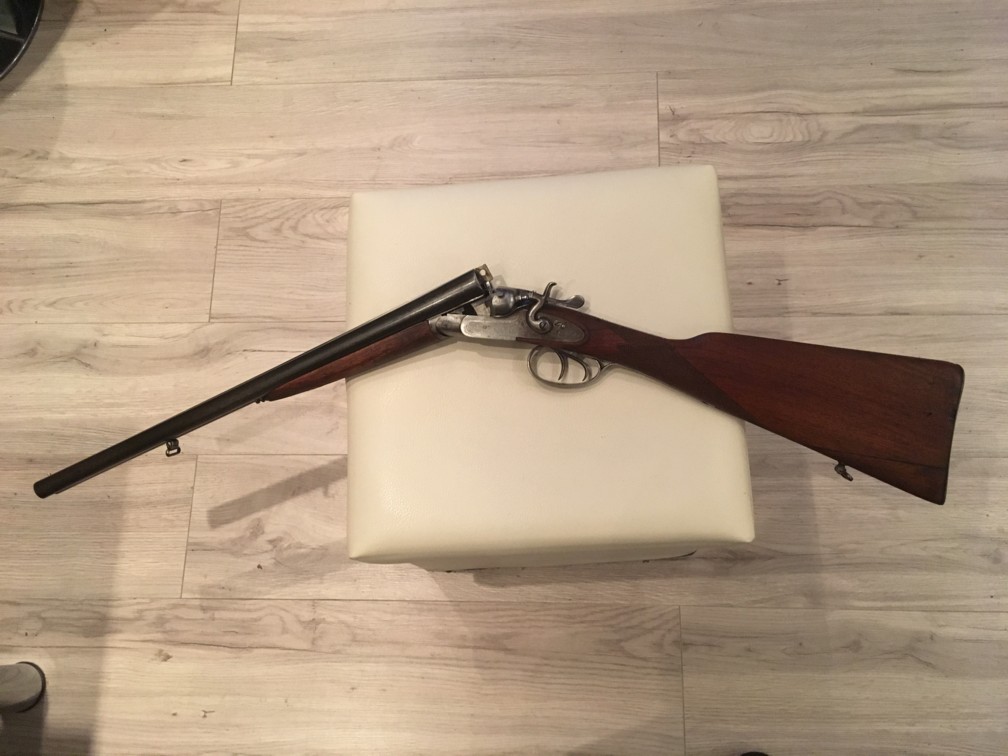
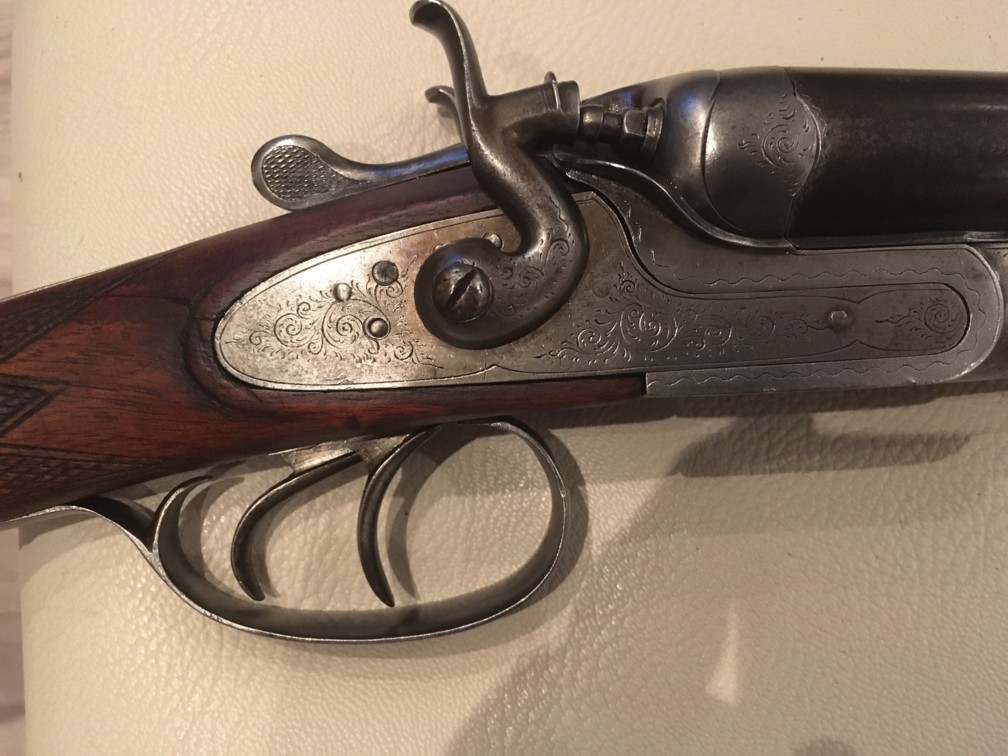
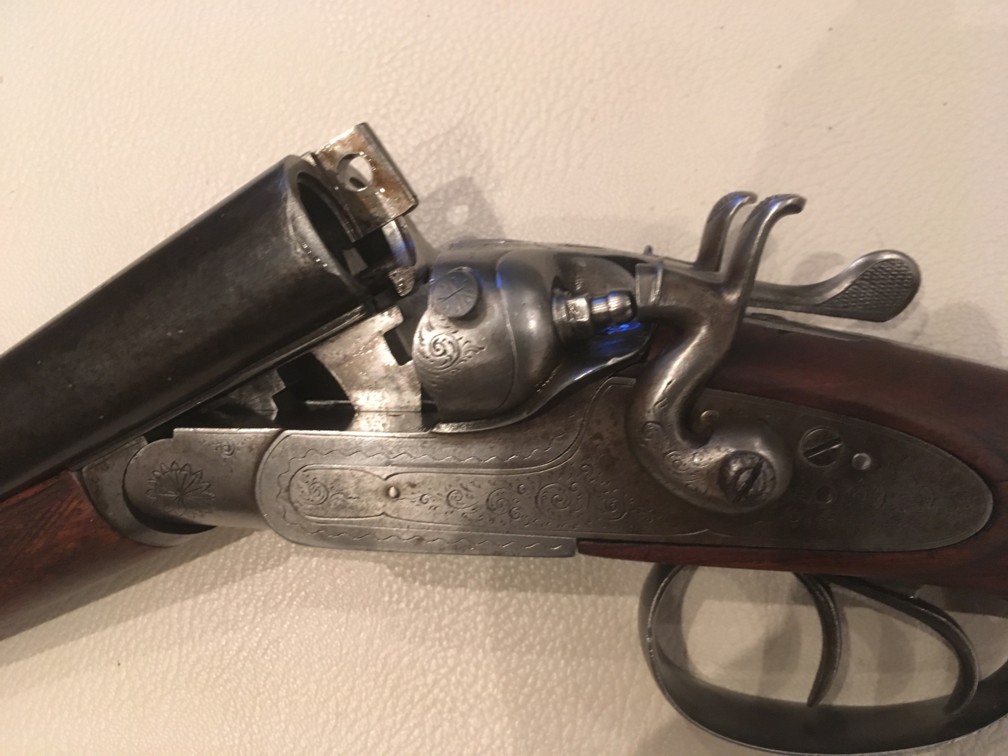

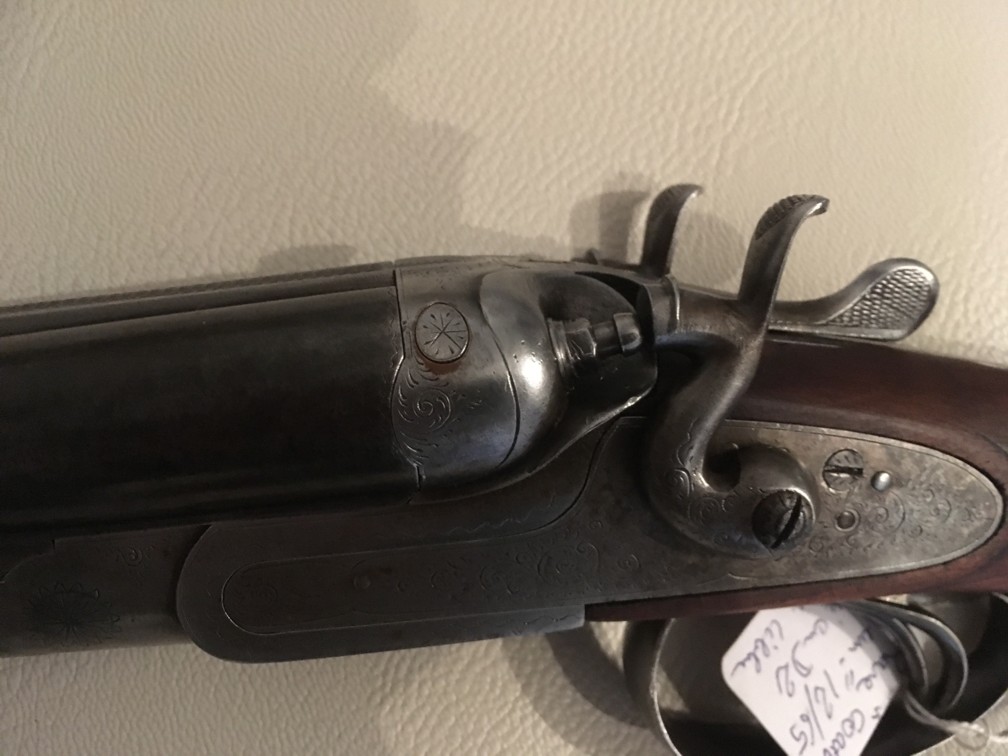
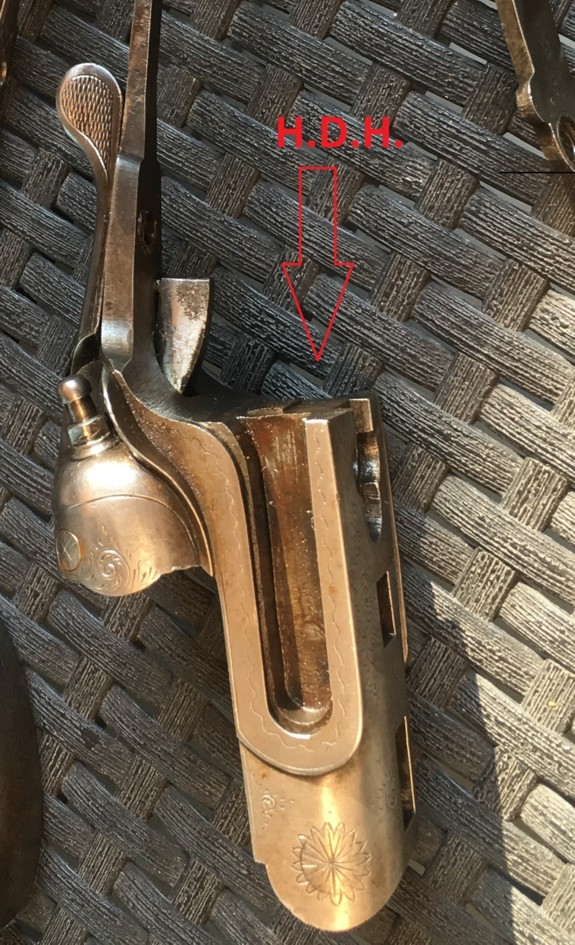
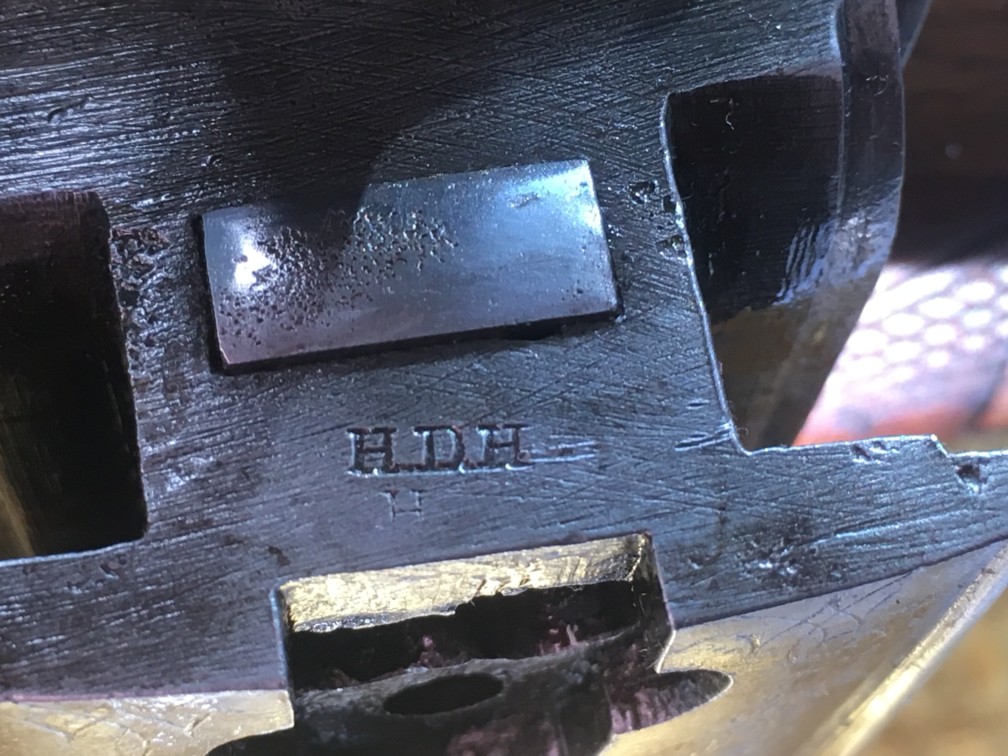
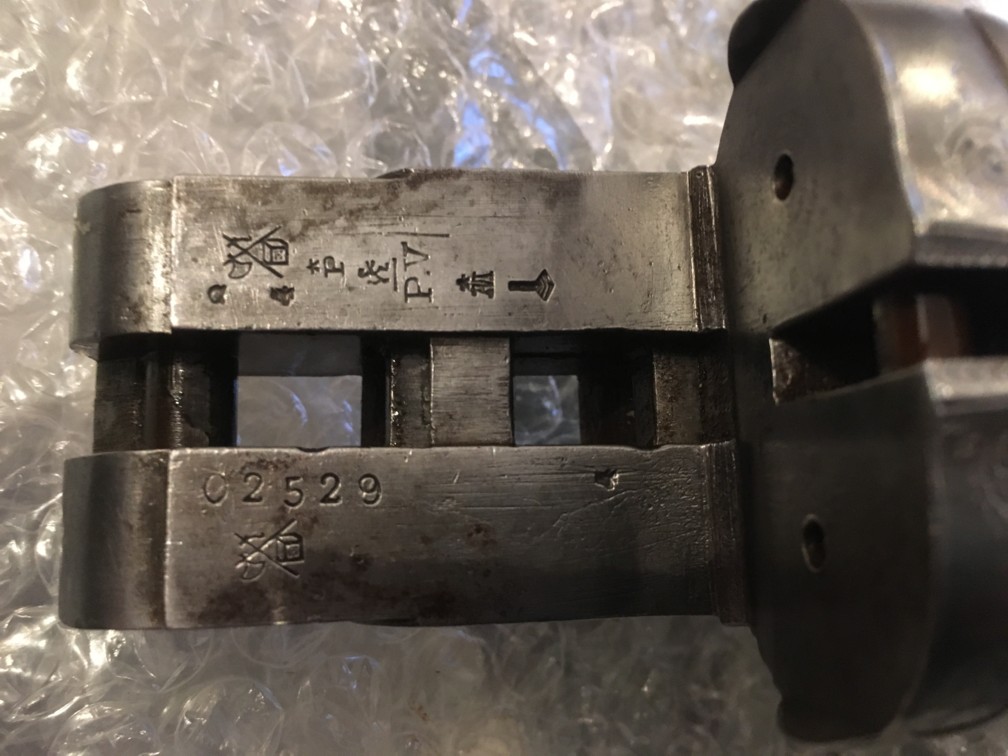
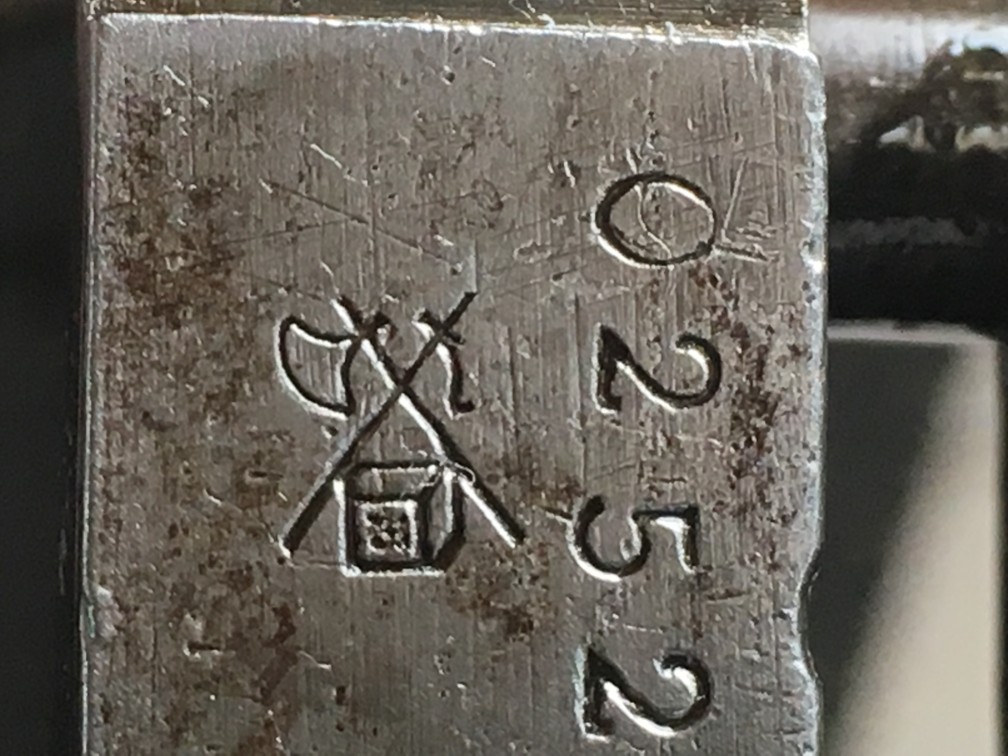
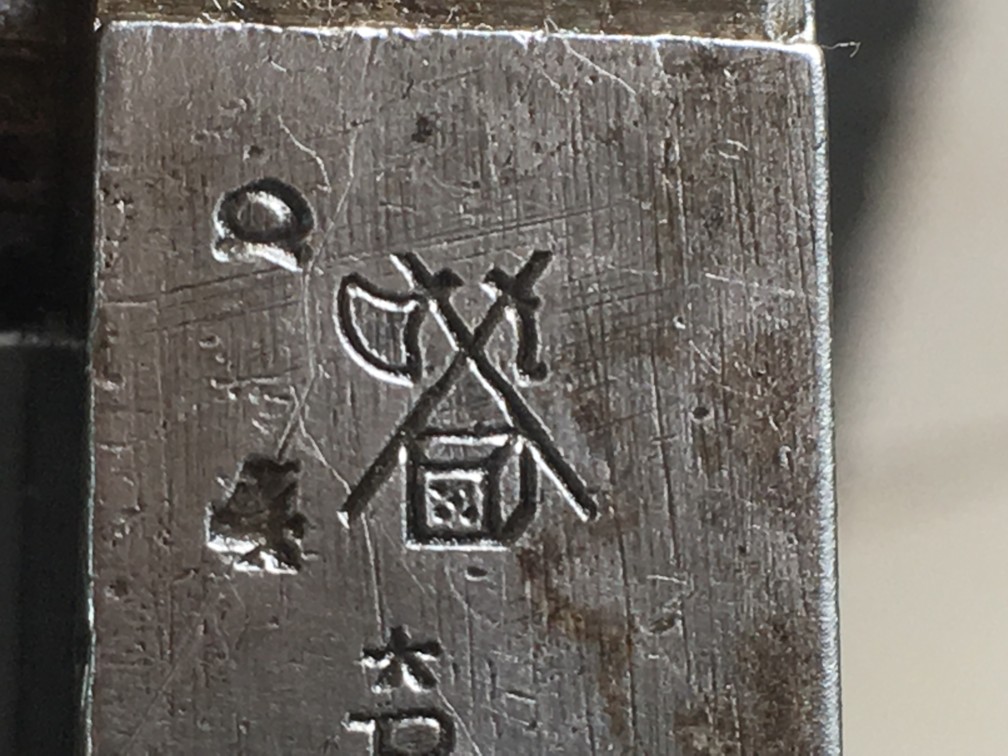
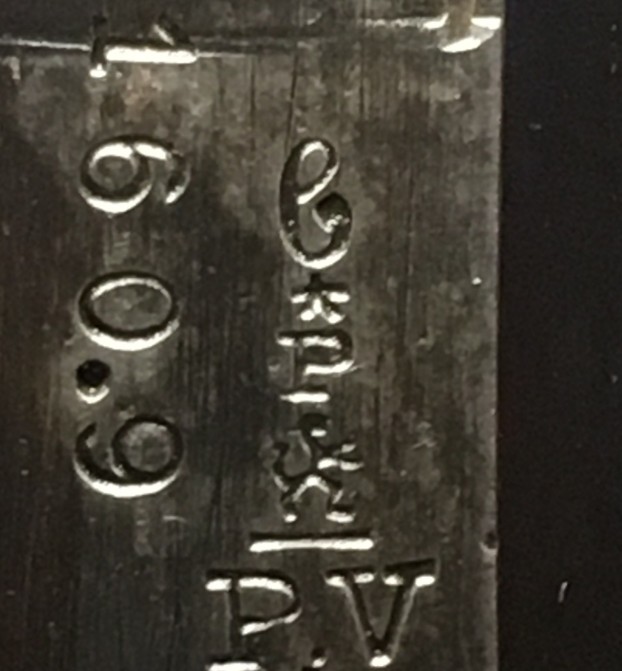
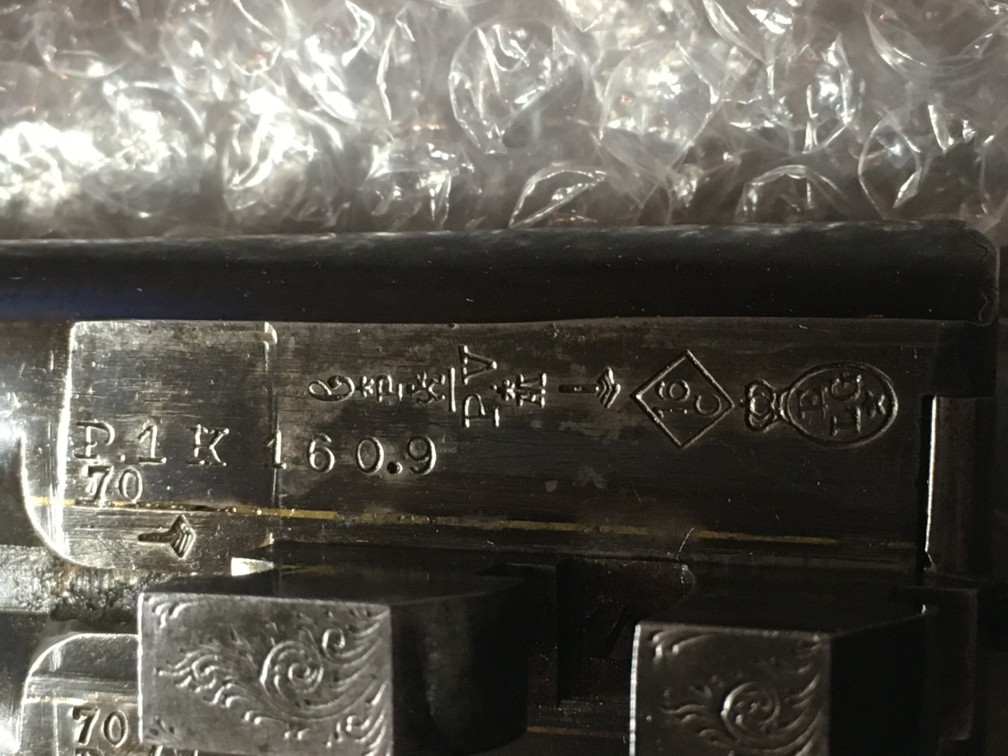
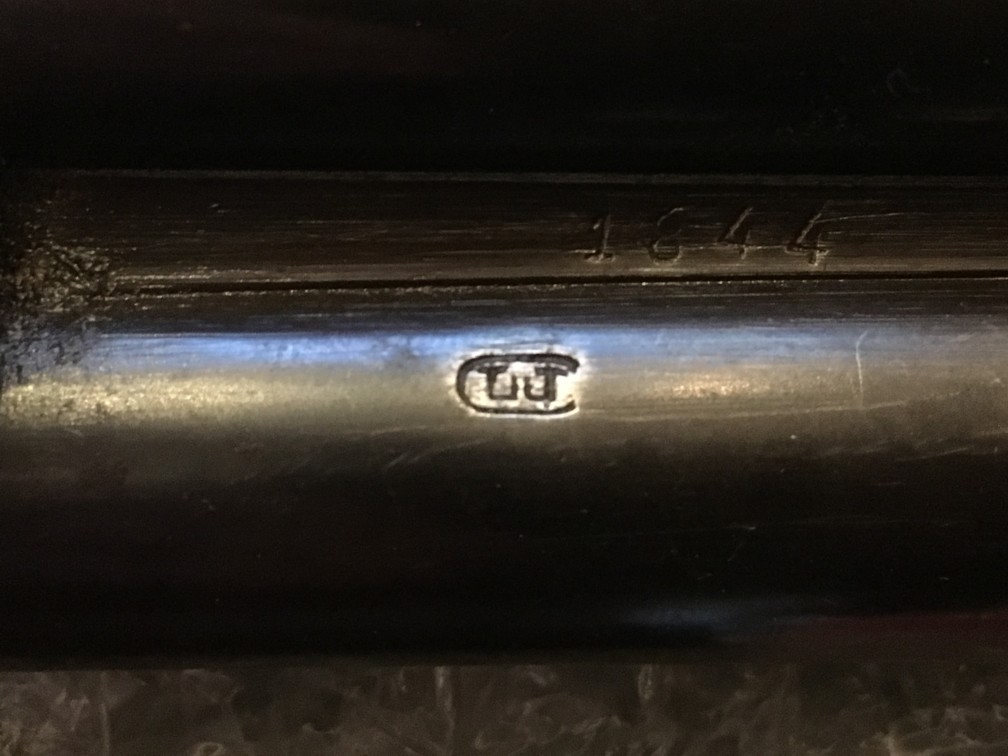
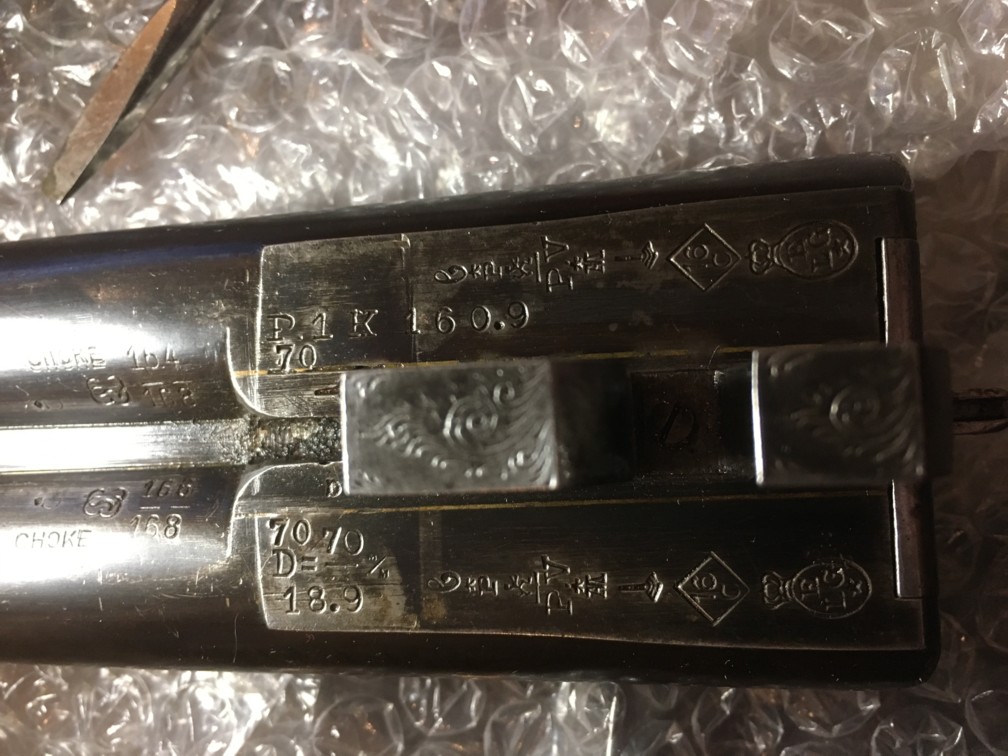
H.D.H.
H.D.H. (Mre d’armes Henrion, Dassy & Heuschen).
Rue des Prés, 8 – Liège.
Registered with the bench of test of 1910 to 1934.
Models of weapons manufactured:
Cobold.
H&D.
Puppy Municipal.
Manufacture already the riffle CANARDOUZE (C.F.) Although the mark is deposited by brothers WILMART Ernest and Eugene in 1926 (MD).
The TALISMAN.
Pistolets TRENTER- IRA PENN.
Revolver HDH 16 shots in 7,65 and 32 S&W and 20 shots in 6,5 vélodog and 6,35.
Revolver LE NOVO.
GG
HDH by Hogg.
Manufacture d’Armes HDH SA, Liege, Belgium (before, Henrion, Dassy & Heuschen).
The HDH was one of the most qualified houses of Liege for the production of revolvers of the economic type, at the end of last century. It is it which was at the origin of the name "Puppy" which was amply copied thereafter by the Spanish companies and even Belgians; a few years before the First World War, the HDH launched an automatic gun of pocket.
Cobold
It is a rather conventional revolver, with double action and box frame, provided with an octagonal barrel and a stick at the head of bird. The single detail worthy of mention is a safety catch of form strange, placed on the left side of the carcass, which blocks the barrel charged by preventing it from turning, and consequently to arm the weapon and to make leave a blow. The "Cobold" was produced in various calibers, of the 38 to the 45, by also including the 10,6 mm German and the 9,4 mm Dutch.
H & D. Breveté by Henrion & Dassy.
H & D were an automatic of 6,35 mm to not fixed cylinder head and the original aspect. The slide was round and a part of the cylinder head was grooved and contained the striker at the posterior end. Under the gun the round housing of the spring was. The sides of the carcass were flattened and carried mark "H&D Automatic Pistol Patent", while behind the grip was assembled a safety. Probably this weapon was produced in few specimens which are extremely rare today.
HDH.
With its initial, which was the mark of usual identification, the firm produced a vast range of economic revolvers which covered weapons of the type as well "Vélodog" as of the monsters with 20 blows which were appreciated by certain Belgian and French manufacturers. On the basis of the bottom of the range, let us quote "Novo" which was a revolver with 5 blows, gauges 22, with opened carcass, without striker, with retractable trigger and grip, a true model of "pocket".
The "Vélodog" was a revolver 5,5 mm, with 6 blows, with screwed carcass, central expulsor and retractable trigger and whose quality was higher than that of the models usually sold under this name in the trade. The 22 caliber was a standard model with box frame, standard "Constabulary", while a model "Artillery type" had an opened carcass, an automatic ejector and a barrel with bands.
These two models were also marketed in the calibre Lebel 8 mm, 38 and 45. At the other end of the range, there was an extravagant model based on the system "Pirlet", characterized by a screwed carcass which opened a dimensioned super barrel vertically containing 20 rooms and product on 5,5 mm "Vélodog" or 6,35 mm; an alternative of this model offered 16 rooms for the cartridge of 7,65mm. These models all is marked and sold directly by the HDH, but they were also yielded to wholesalers and one can find them bearing the names of various small retailers, although one always finds initial "HDH" printed in a not very obvious place of the carcass.
Left Wheeler.
This model with the odd name ("wheel of left") was probably the last revolver built by the HDH; it was a copy of the PP Colt, in caliber 32 or 38.
Lincoln; Lincoln-Bossu (uneven).
The "Lincoln" was a revolver of pocket gauges 22, with box frame and retractable trigger, which was normally embellished by incisions and by the handles which were in imitation beads or ivory.
The "Lincoln-Bossu" was sophisticated less, it was a weapon of the type "Vélodog" with internal striker and retractable trigger predisposed to receive the 5,5 or the 6,35 ACP mm.
Puppy.
Revolver of pocket with retractable trigger, produced in small calibers - 22, 5,5 mm, 6,35 mm ACP - generally of the type "Vélodog". There were innumerable alternatives - with internal striker, reduced striker, large qtriker, box frame, screwed carcass - and the majority were largely decorated.
H.D.H. (HENRION – DASSY – HEUSCHEN)
In spite of the small number of photographs of this weapon, I think that it is about a shotgun to juxtaposed barrels and locks hammerless. The weapon carries engravings of the types “rosettes”.
The weapon carries the lawful punches of the proofhouse of Liege-Belgium, namely:
ELG* in a crowned oval: punch strongly erased by sandpapering. It is about final acceptance post 1893.
S* and AV*: they are countermarks of controllers post 1877.
Peron: inspection post 1853.
PV surmounted of a stylized lion: test with the powder without smoke, of use of 1898 to 1968.
The manufacturer of this weapon is the partnership H.D.H. (HENRION - DASSY - HEUSCHEN) street Chéri, 22 in LIEGE; It was registered with the proofhouse of Liège of 1910 to 1921. From 1921 to 1924 the company becomes H.D.H. SA, of 1924 to 1925 Munitions factory H.D.H. street of the Meadows, 8 in LIEGE, of 1925 to 1929 HDA SA, of 1929 to 1932 HDH Manufacture and finally HDH SA of 1932 to 1934.
Mark of factory: see enclosures.
GG
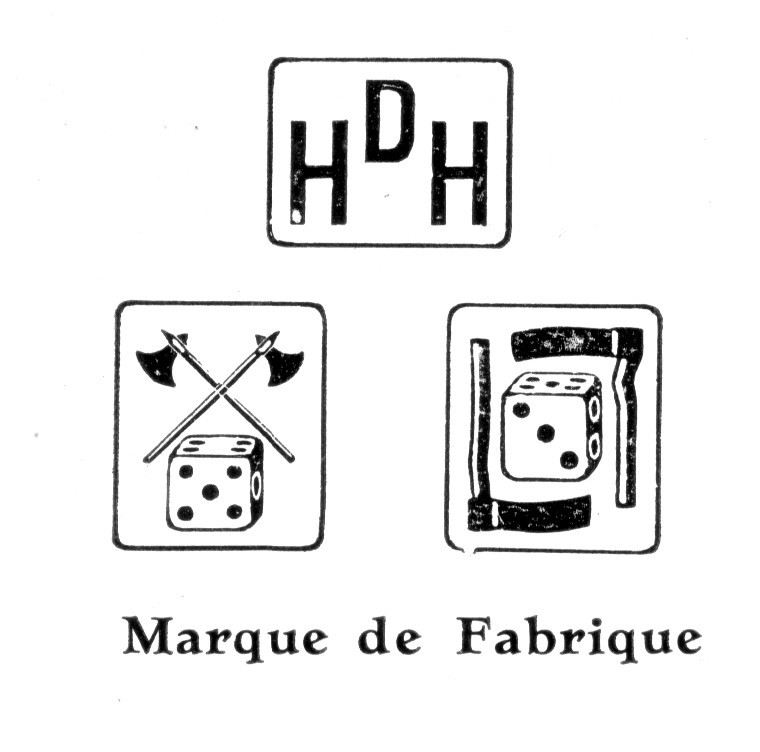
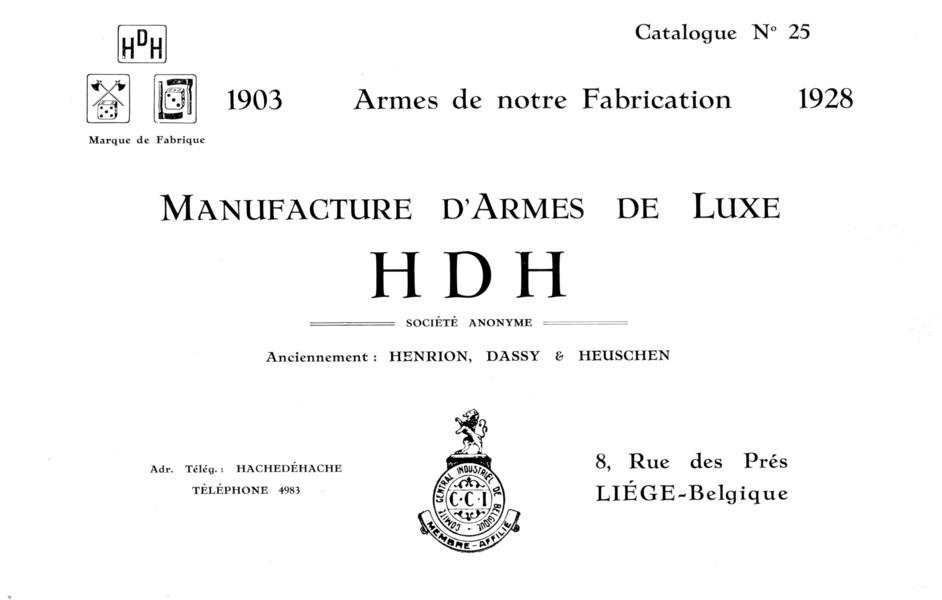
Revolver Puppy
Caliber .320
Photos Littlegun
Revolver HDH (with 20 shots)
Known under the names of "Machine-gun HDH", "Terrible" or " Redoutable " (Manufacture d’Armes et Cycles de Saint-Etienne) or "Wild West" (in India and Asia), manufactured in the calibres 6,5 vélodog, 6,35 (20 shots) and 7,65 or 32 S&W (16 shots) by firm HDH (patent of 1910) until the beginning of the years 1930 (the catalogue from where is extracted annexed publicity is gone back to 1928).
This revolver with two superposed barrels and double line of rooms (in quincunx) shoot, in simple or double action. A hammer with double striker strikes the starter of a cartridge and the other the vacuum; to the following shot, the cylinder swivels of 20° and the first hammer meets the vacuum whereas the second strikes a starter, the barrels thus draw in turn. The cylinder is equipped with a collective extractor with exhaust out of star. For the operations of recharging/unloading, it is necessary to open the revolver by pressing the side push-button and to rock the guns and barrel upwards.
The model presented is gone back to 1911 (according to the files of the Museum), bronzed black of war, for cartridges vélodog (20 shots), barrels with 4 stripes, plates in drowning squared.
Marking H.D.H. and various test and hallmarks.
Collection of the Museum of Weapons of Liege (which I thank)
HPH
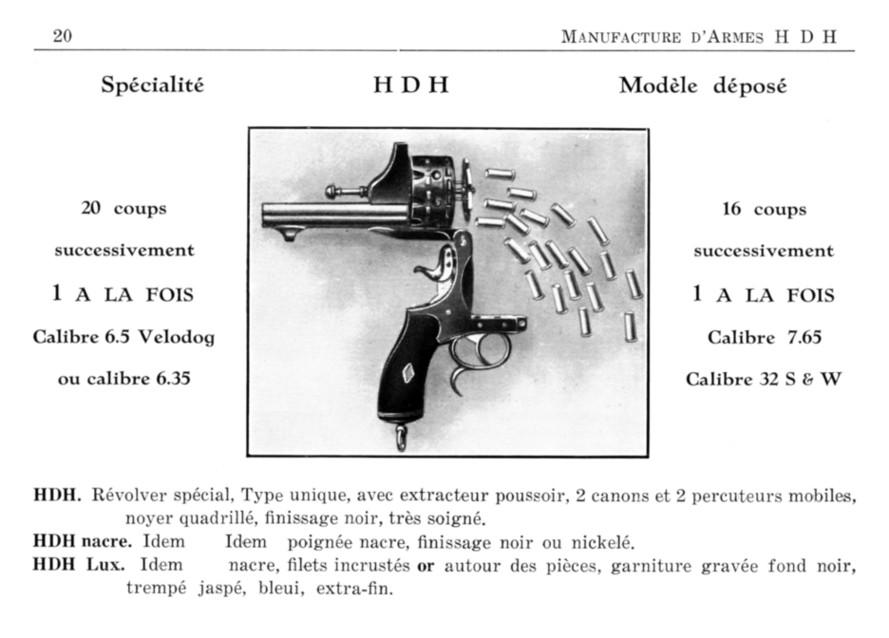

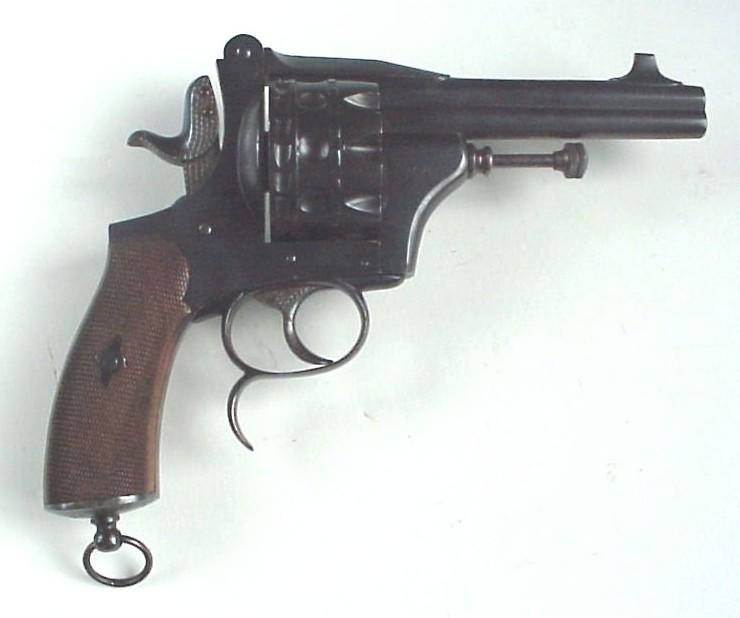

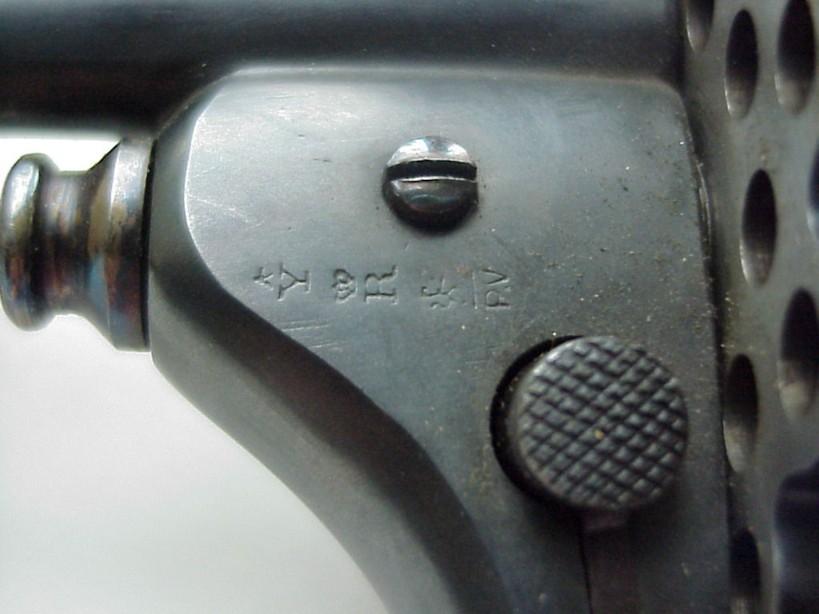
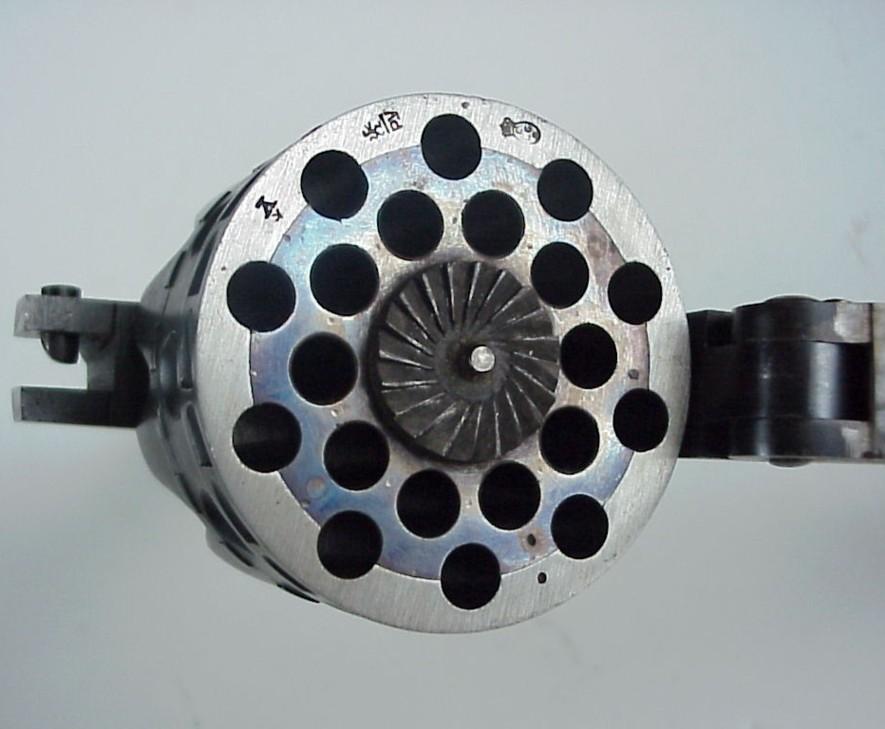

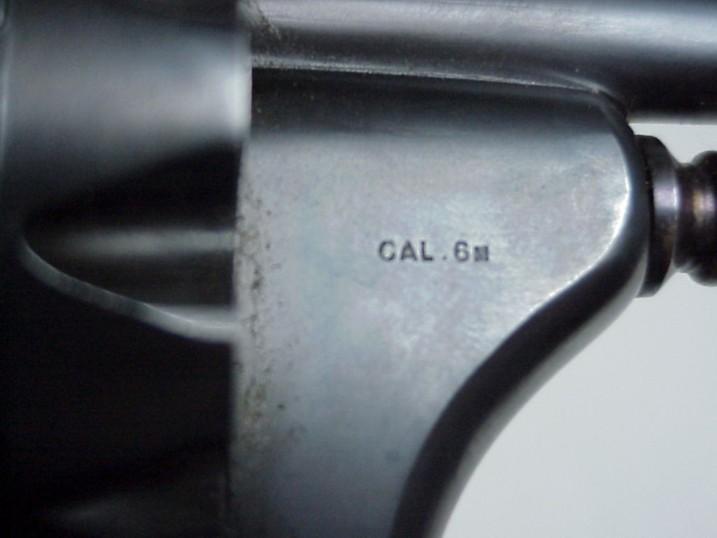
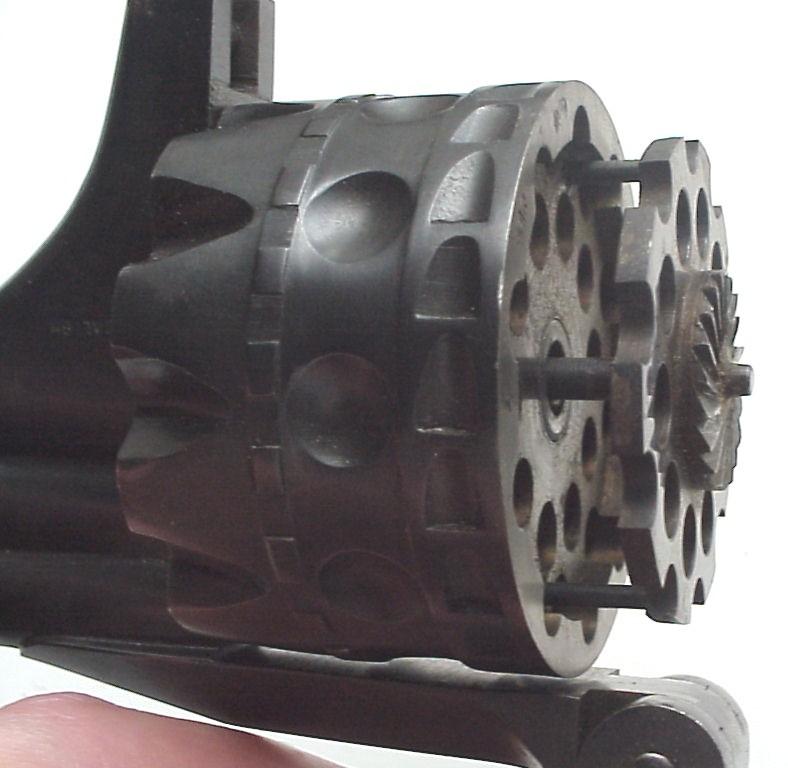
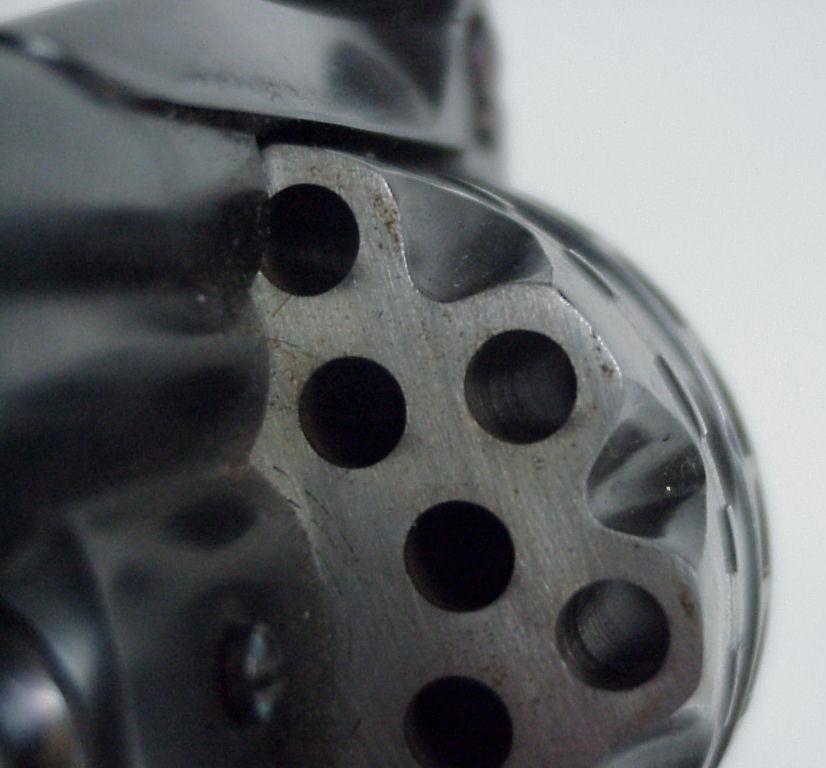
Another revolver 20 shots of HDH
Many thanks to Dave Young for the photos
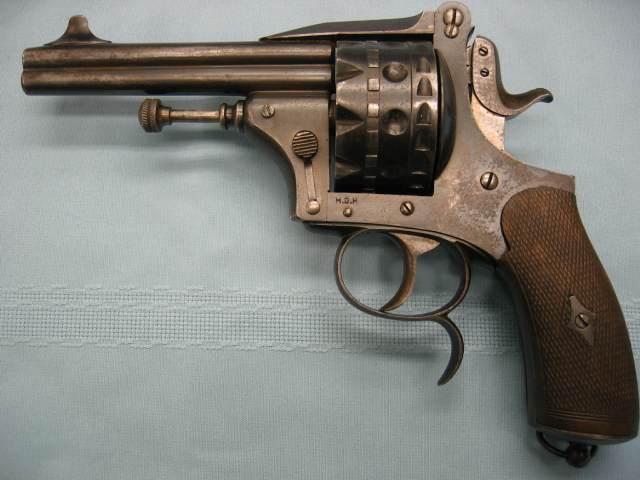
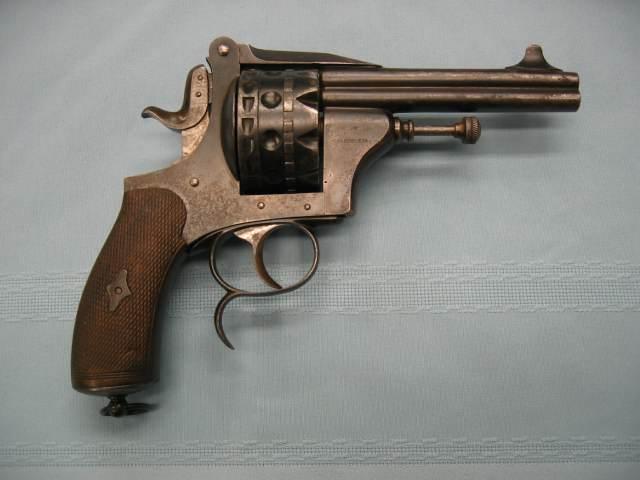
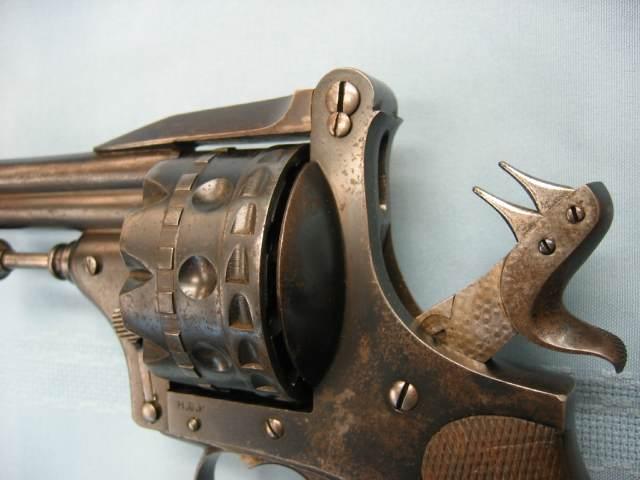
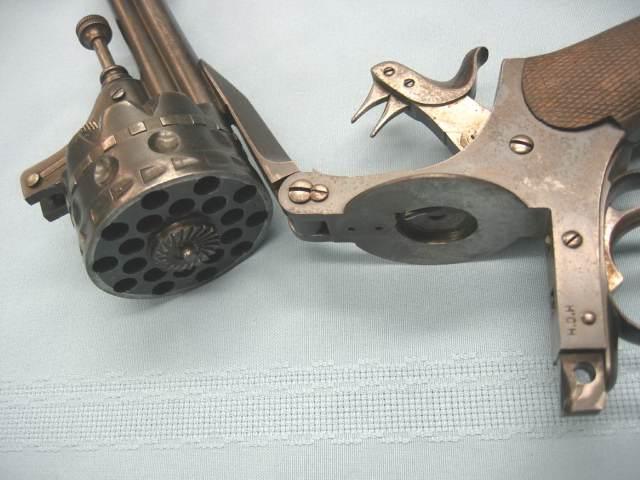
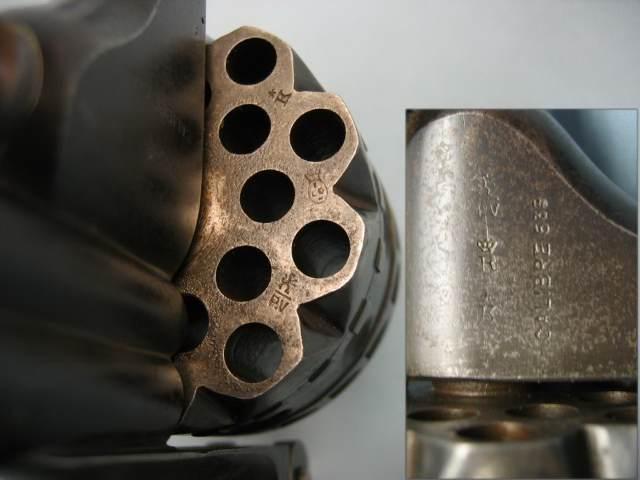
HDH
It of a standard revolver bulldog with 12 shots calibre does 6,35mm.
The traditional loading is done by the door placed on the right of the carcass.
The barrel is with eight sides and ends in a handlebar in half-moon.
The grips way ebony are finely squared. The stick is equipped with a ring of suspension.
Does the weapon carry two (?) punches of B.E.Lg is:
L spangled: countermark of the controller (27.01.1877 to the 26.02.1968)
PV surmounted by a stylized lion: test with the powder without smoke (04.10.1898 to the 26.02.1968)
The weapon was manufactured by the Manufacture d’Armes de luxes H.D.H. (HENRION, DASSY & HEUSCHEN) which was located Rue des prés, 8 to Liège.(1903/1934)
In its catalogue n° 25 of 1928, we discover a similar weapon with the weapon above.
The weapon represented is obviously intended for the shooting of precision since its barrel is longer. Its cylinder is with 12 blows, it existed about it with 20 blows also.
It seems that the revolvers with great capacity were the war-horse of the firm HDH which in manufactured in various calibres (6mm - 6,35 mm - 7,65 mm) from 12 to 20 blows.
These weapons bore various evocative and commercial names such as HADEHA – the MACHINE-GUN - the EXPLORER or the TERRIBLE one. These weapons were abundantly copied by other manufacturers and in particular the Manufacture d’Armes de Saint Etienne.
GG
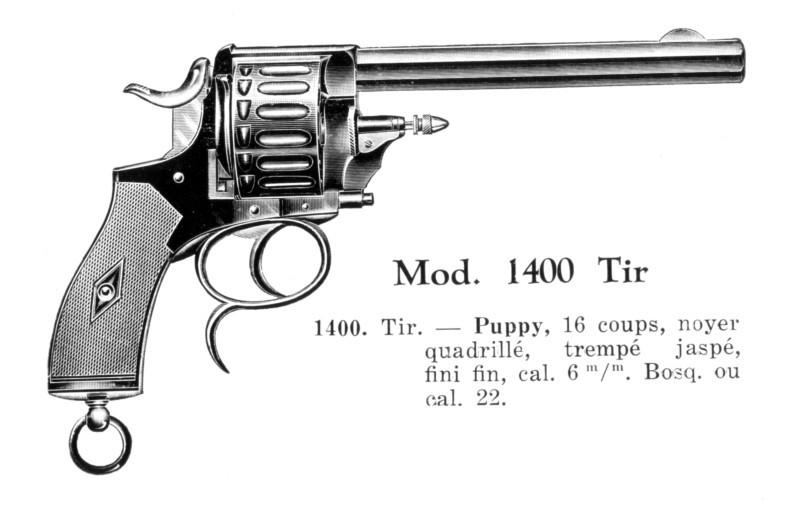
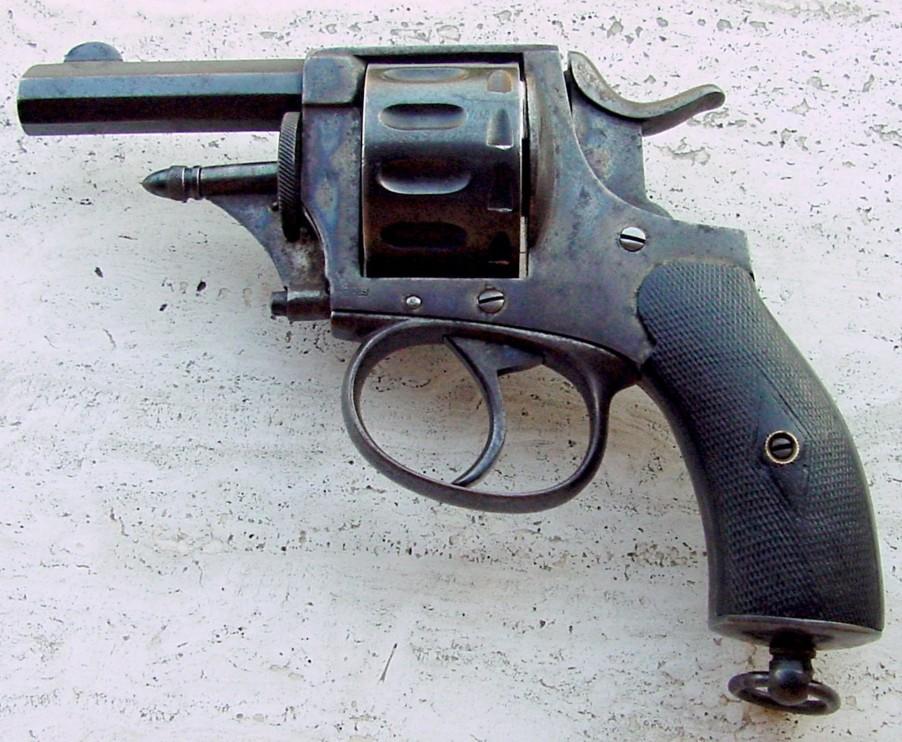
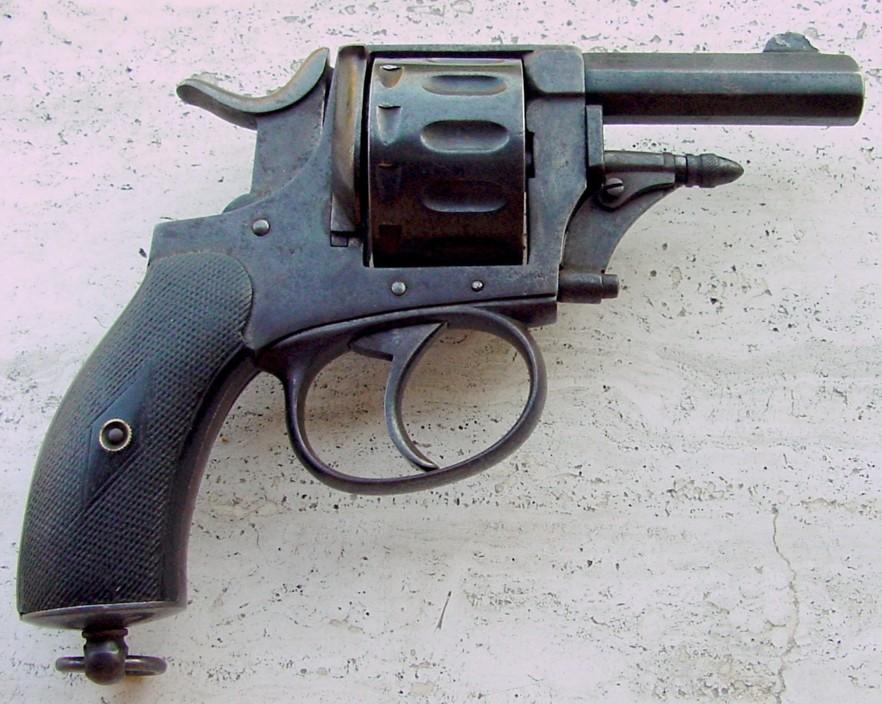
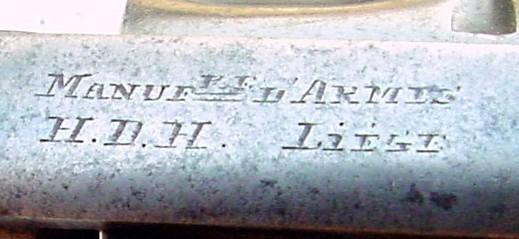
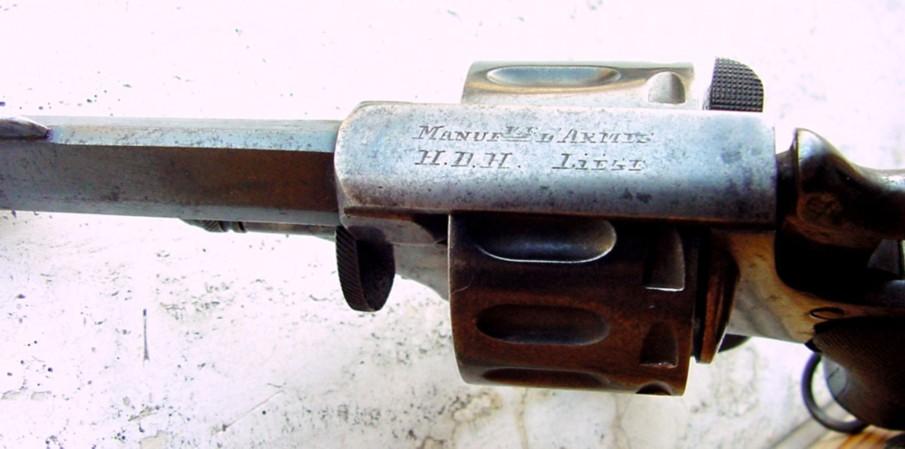
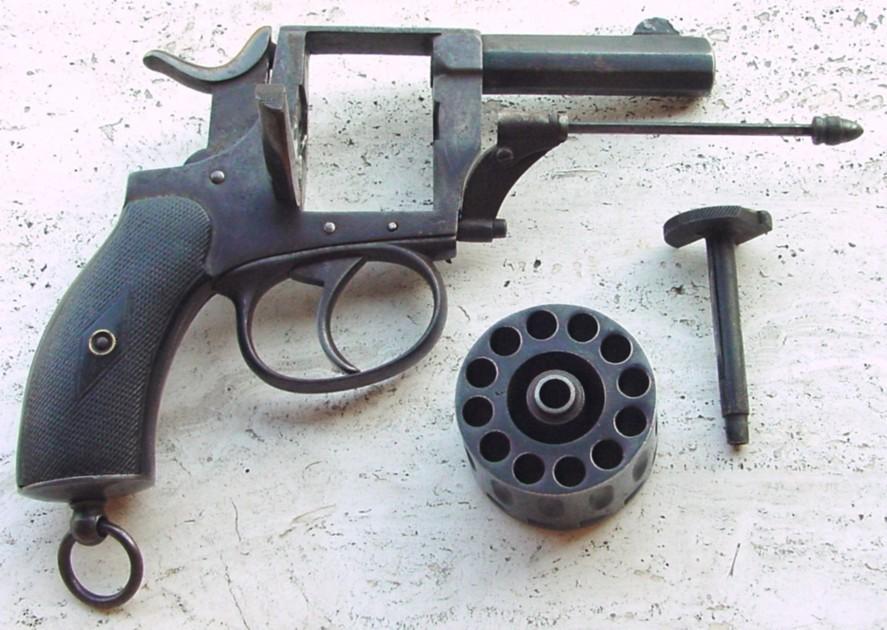
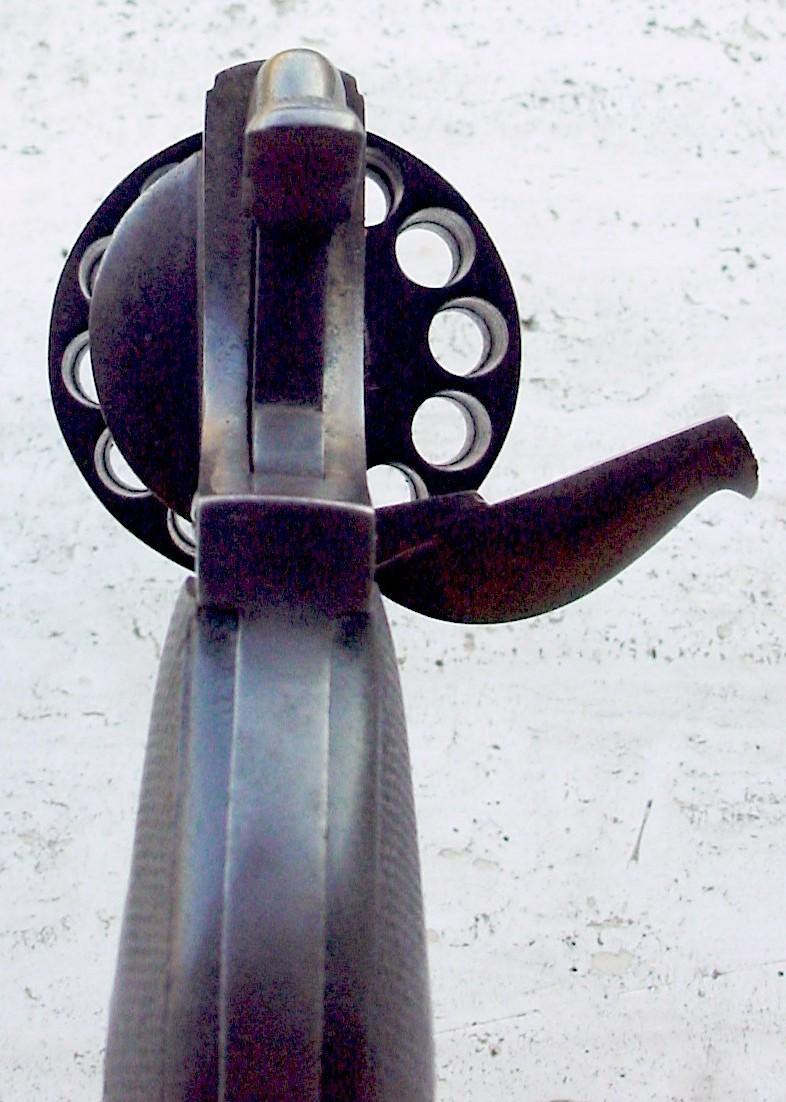

Cobolt (?)
Photographs friendly authorized by "ANTIQUEFIREARMS.COM"
|
"H.D.H." under the designation of "Cobold": It acts of a revolver with automatic ejection of the cases: the opening of the hammer in the frame was increased: the ball leaves, under the pressure the hammer retrogresses, letting the casing eject itself by the opening of the hammer, then the hammer in its race ends on a thrust (quite visible on the photograph) and returns in position. This weapon was not manufactured only by H.D.H., another specimen observed is marked "Rongé": an article presenting this weapon is been published in one (old) number of D.W.M. translated into French at the time. D. Lesne. |
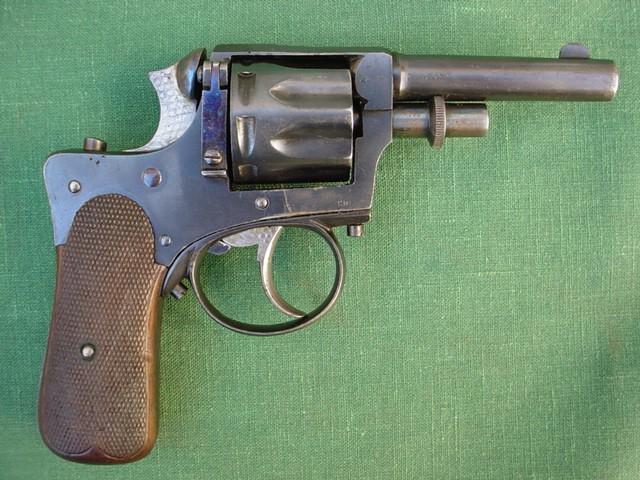

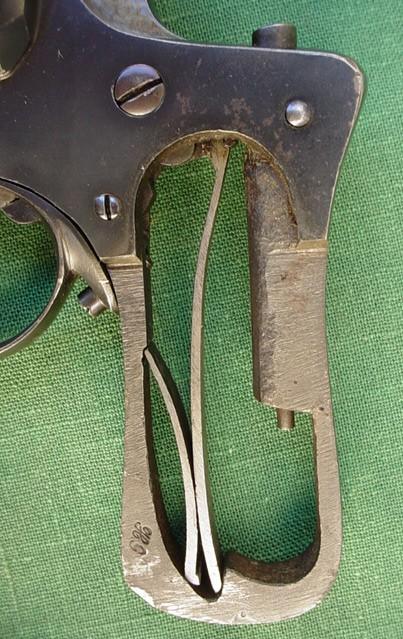
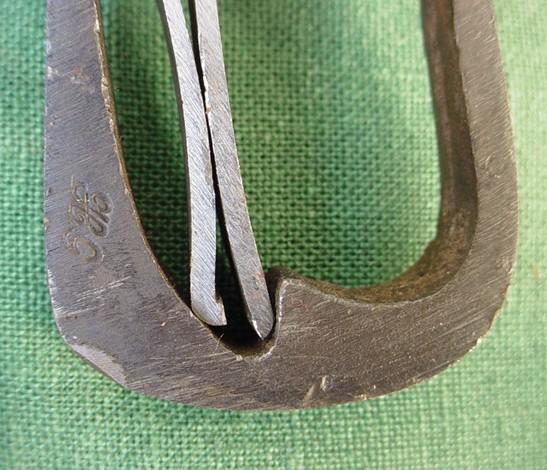
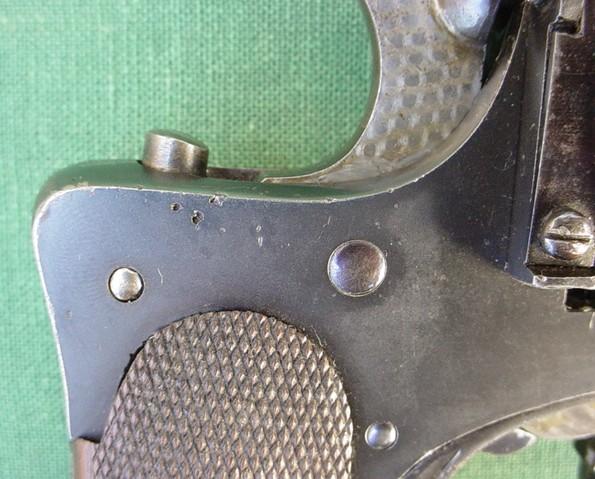
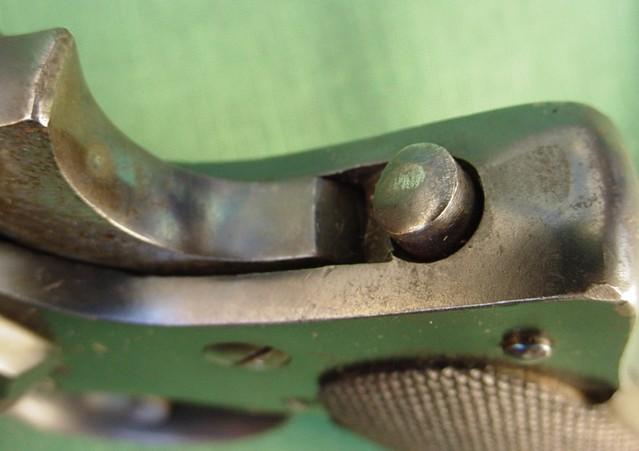
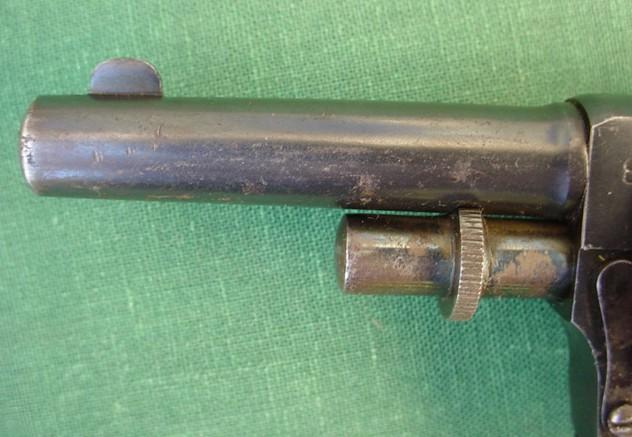
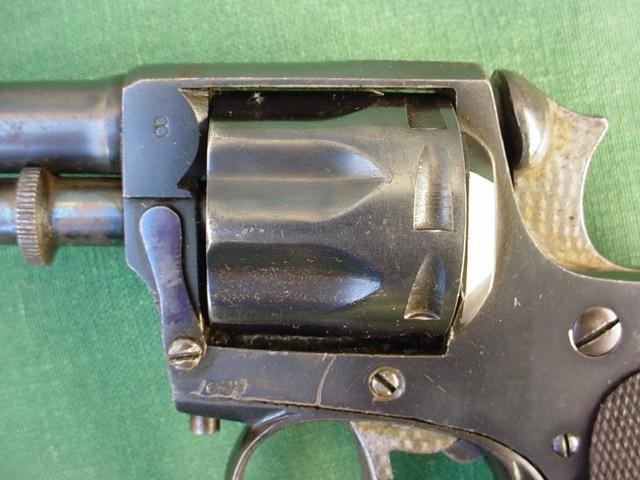
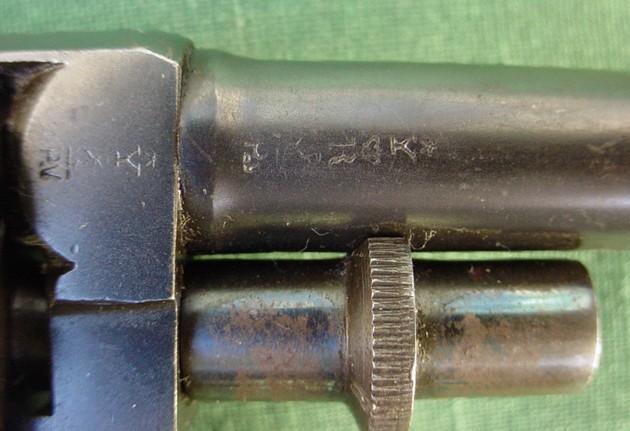
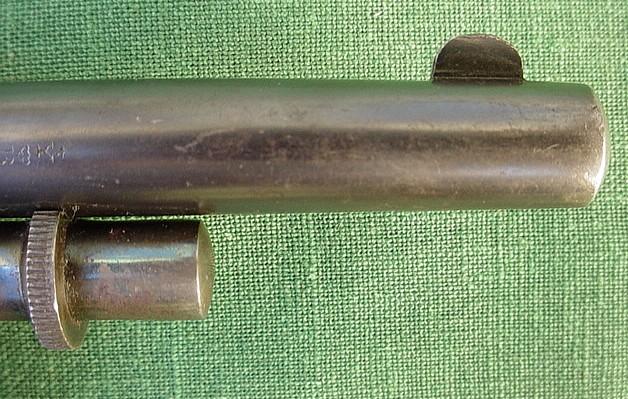
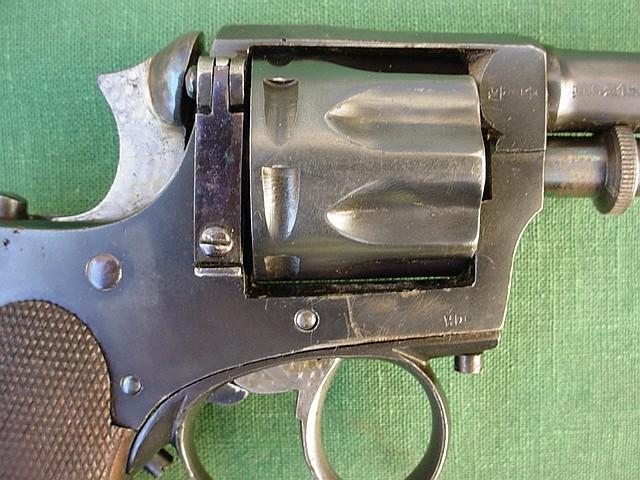
Novo revolver invented by D. D. Oury
The left is the earlier and scarce type, six shot-cylinder in 5mm Novo, the right is the later more common type, five shot-cylinder in 6.35mm
D. D. OURY BTE.marking on left side of frame on the six-shot revolver.
LE NOVO vest pocket size revolver, number 313 stamped on frame, Liège’s ELG proof stamps on frame 6-shot cylinder and barrel, cal. 5mm Le Novo. Frame and barrel are made from steel, engraved and plated, the grip is embossed brass with embossed LE NOVO. The grip can be folded covering the pistol, the trigger can be folded. A lever on the right side is used to remove the barrel for loading. The revolver is made by HDH = Henrion, Dassy et Heuschen, Liège, Belgium. The tiny guy is in excellent condition and extremely rare in engraved.
(D. D. Oury is the inventor according to the German Revolver Lexikon).
Photographs friendly authorized by “Horst Held”
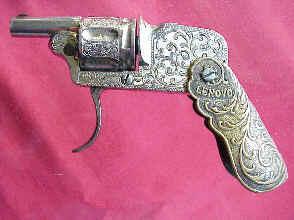
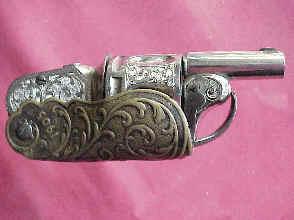
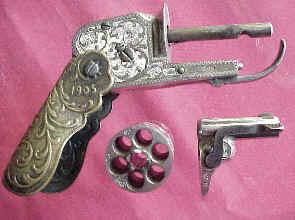
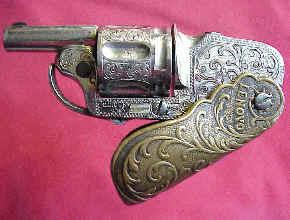
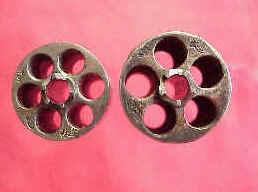
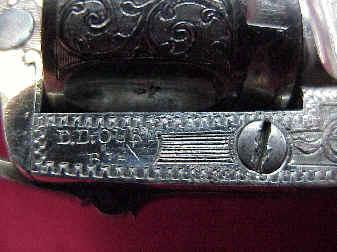
Velodog HDH
Model 5226S
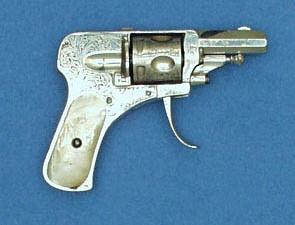
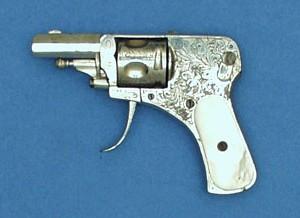
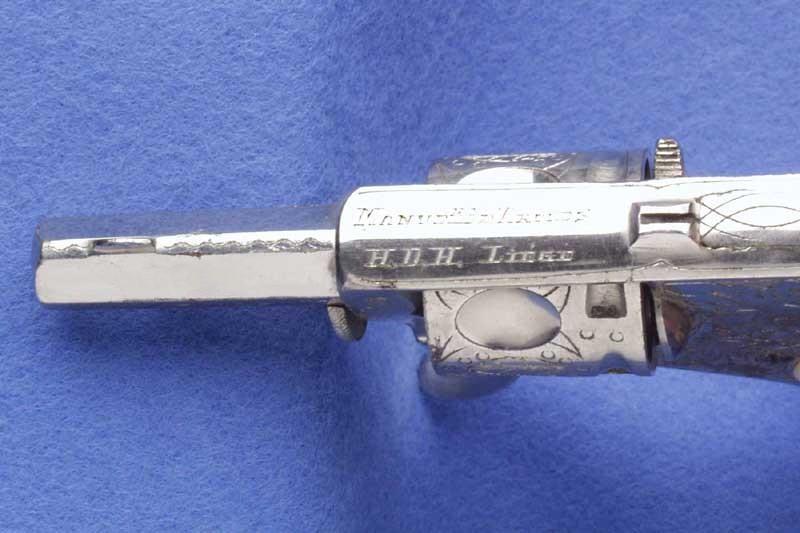
Velodog HDH
Model 5220
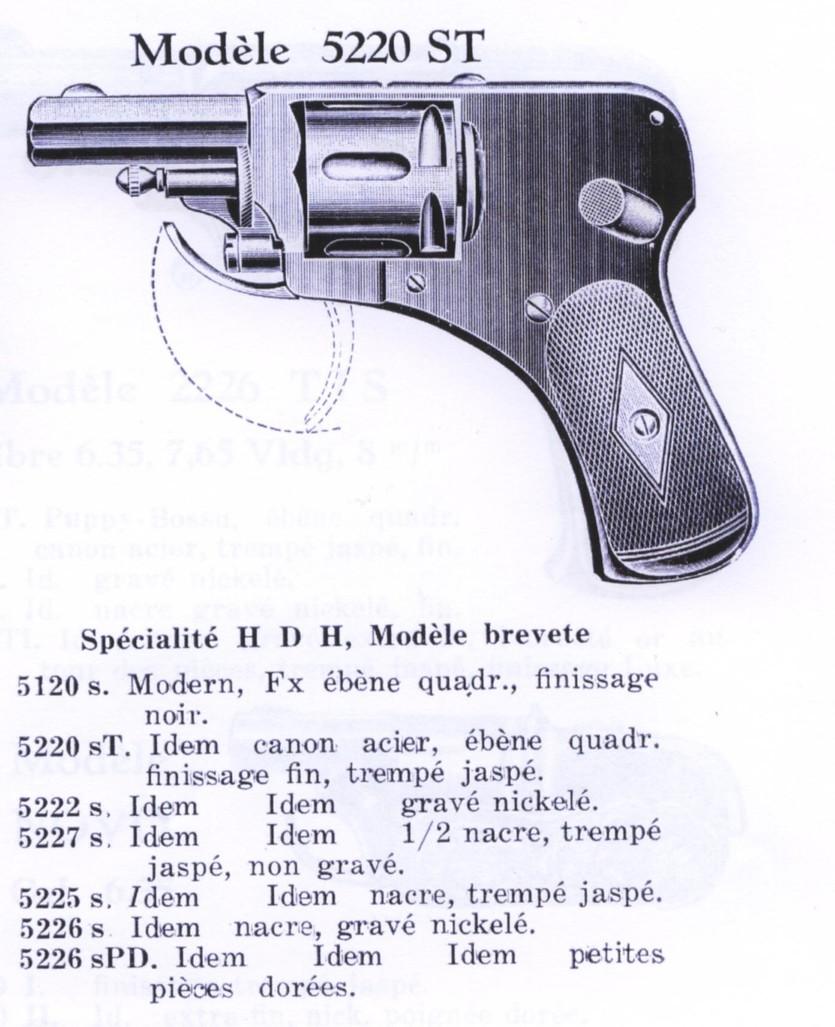
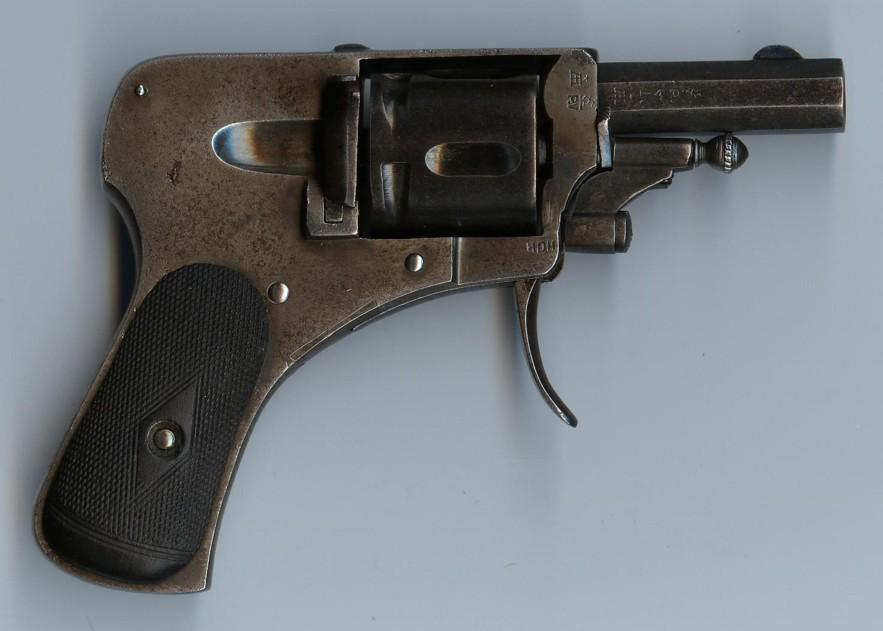
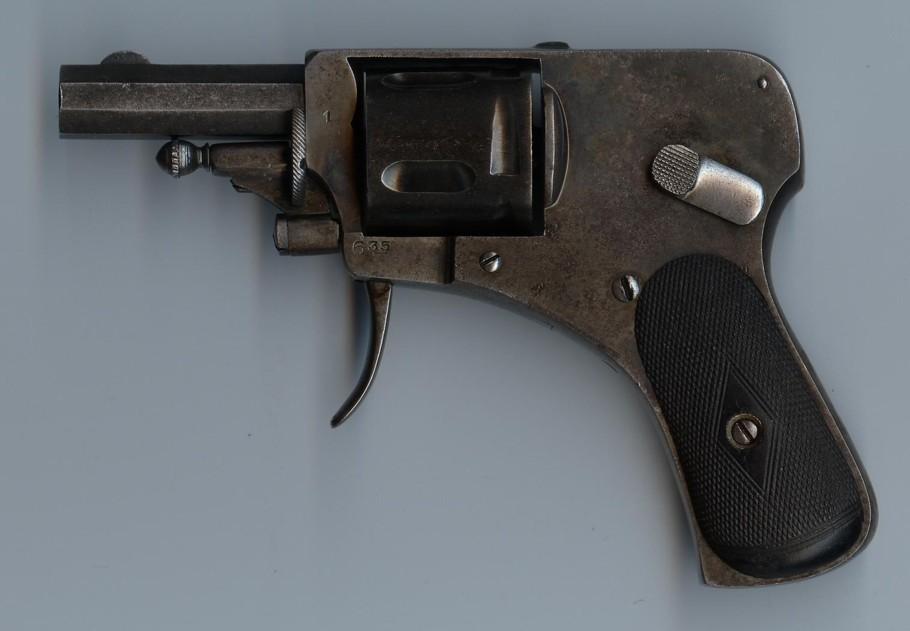
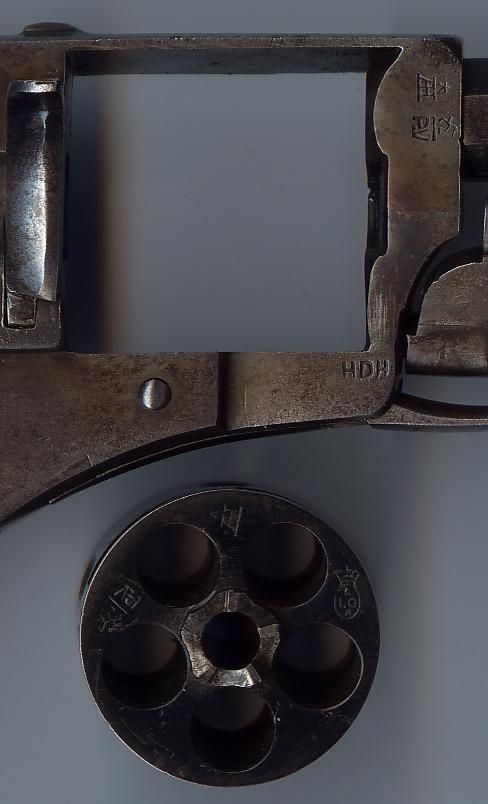
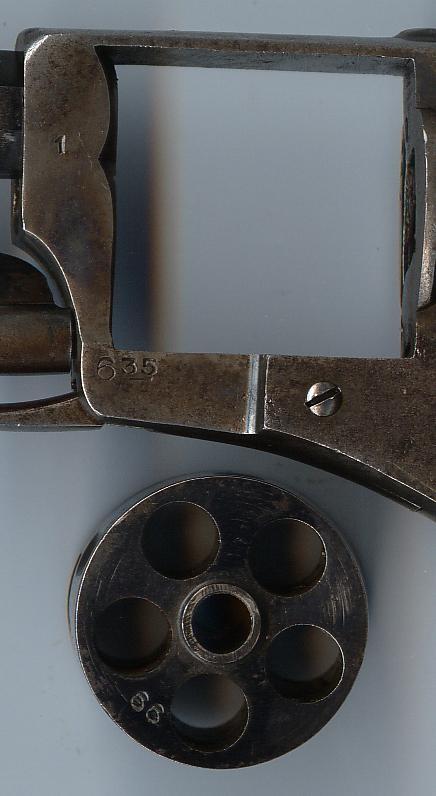
Revolver HDH 8mm
Revolver invented by Dieudonné OURY of Mortier (province of Liege) at the end of the 20th century.
This weapon was manufactured by HDH of LIEGE (see page of the site) but also by others such as GALAND which also manufactured other models invented by OURY (the NOVO and a revolver with tilting barrel).
It is probable that not having the capacities of mass production, OURY yielded its patent to GALAND because the catalogue of the firm shows the weapon in several gauges (8 mm kill-kill-7,65 - 32 S&W) and carrying mark GALAND and denomination TUE-TUE (see card jointe).Il acts of a revolver "hammerless" intended for defence and functioning in double action. It is not equipped with a rod.
Manufacturer: Henrion Dassy Heuschen (HDH)
Hammerless 5 (or 6 shots?), calibre 8 mm *, plates ebony (I suppose truth), engraved, nickelled, gilded.
System of opening to key (idem “Mignon” of Galand - Novo).
* 8 mm, but not Lebel (cartouches of lawful rifle - very often thus called but it is an error). Correct names : 8/92, 8 mm for revolver (1892), 8 mm NR (no lawful) 8 mm kill-kill, etc
GG et PH
Thank you with our Italian correspondent Alberto for the splendid photographs
